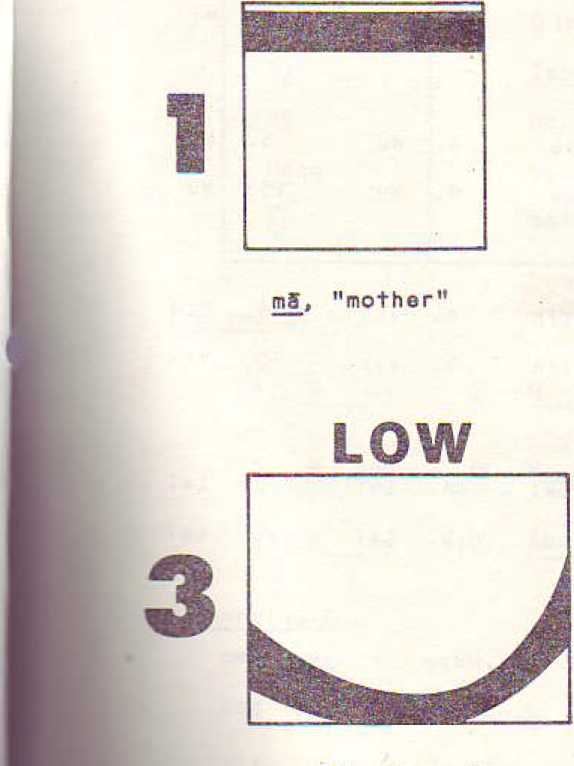
mǎ, "horse"
CM 0102 S
1 STANDARD CHINESE
A MODULAR APPROACH
RESOURCE MODULES:
PRONUNCIATION and ROMANIZATION
NUMBERS
CLASSROOM EXPRESSIONS fl
TIME and DATES
SPONSORED BY AGENCIES OF THE
UNITED STATES AND CANADIAN GOVERNMENTS
This publication is to be used primarily in support of instructing military personnel as part of the Defense Language Program (resident and nonresident), Inquiries concerning the use of materials, including requests for copies, should be addressed to:
Defense Language Institute
Foreign Language Center
NonresidentTraining Division
Presidio of Monterey, CA 93944-5006
Topics in the areas of politics, international relations, mores, etc which may be considered as controversial from some points of view, are sometimes included in the language instruction for DLIFLC students since military personnel may find themselves in positions where a clear understanding of conversations or written materials of this nature will be essential to their mission The presence of controversial statements-whether real or apparent--m DLIFLC materials should not be construed as representing the opinions of the writers, the DLIFLC, or the Department of Defense.
Actual brand names and businesses are sometimes cited in DLIFLC instructional materials to provide instruction in pronunciations and meanings. The selection of such proprietary terms and names is based solely on their value for instruction in the language. It does not constitute endorsement of any product or commercial enterprise, nor is it intended to invite a comparison with other brand names and businesses not mentioned
In DLIFLC publications, the words he, him, and/or his denote both masculine and feminine genders. This statement does not apply to translations of foreign language texts.
The DLIFLC may not have full rights to the materials it produces. Purchase by the customer does net constitute authorization for reproduction, resale, or showing for profit. Generally, products distributed by the DLIFLC may be used in any not-for-profit setting without prior approval from the DLIFLC.
STANDARD CHINESE
A MODULAR APPROACH
RESOURCE MODULES:
PRONUNCIATION and ROMANIZATION
NUMBERS
CLASSROOM EXPRESSIONS
TIME and DATES
AUGUST 1979
Standard Chinese: A Modular Approach originated in an Inter-agency conference held at the Foreign 5ērvice Institute in August 1973 to address the need’ genera! ly felt in the U.S. Government language training community for Improving and updating Chinese materials to reflect current usage in BēljTng and in Taipei.
The conference resolved to develop materials which were flexible enough Tn form and content to meet the requirements of a wide range of government agencies and academic institutions.
A Project Board was established consisting of representatives of the Central Intelligence Agency Language Learning Center, the Defense Language Institute, the State Department’s Foreign Service institute, the Cryptologic School of the National Security Agency, and the U.S. Office of Education, later joined by the Canadian Forces Foreign Language School. The representatives have Included Arthur T. McNeill, John Hopkins, and John Ēoag CCIA); Colonel John F. Elder Hi, Joseph C. Hutchinson, Ivy Glbian, and Major Bernard Mulier-Thym (DU); James R. Frith and John B. Ratliff III (FSI); Kazuo Shltama (NSA); Richard T. Thompson and Julia Petrov (OE); and Lieutenant Colonel George Kozorlz (CFFLS) .
The Project Board set up the Chinese Cora Curriculum Project in 1974 in space provided at the Foreign Service Institute. Each of the six U.S. and Canadian government agencies provided funds and other assistance.
Gerard P. Kok was appointed project coordinator, and a planning council was formed consisting of Mr, Kok, Frances LI of the Defense Language Institute, Patricia O’Connor of the University of Texas, Eari M. RIckerson of the Language Learning Center, and James Wrenn of Brown University. In the fall of 1977, Lucille A. Barale was appointed deputy project coordinator. David W. Dellinger of the Language Learning Center and Charles R. Sheehan of the Foreign Service Institute also served on the planning council and contributed material to the project. The planning council drew up the original overall design for the materials and met regularly to review their development.
Writers for the first half of the materials were John H. T. Harvey, Lucille A. Barale, and Roberta S. Barry, who worked in close cooperation with the planning council and with the Chinese staff of the Foreign Service Institute. Mr. Harvey developed the instructional formats of the comprehension and production self-study materials, and also designed the communication-based classroom activities and wrote the teacher’s guides. Lucille A. Barale and Roberta S. Barry wrote the tape scripts and the student text. By 1978 Thomas E. Madden and Susan C, PoI a had Joined the staff. Led by Ms. Baraìe, they have worked as a team to produce the materials subsequent to Module 6.
All Chinese language material was prepared or selected by Chuan 0. Chao, Ylng-chlh Chen, Hslao-jung Chi, Eva Dlao, Jan Hu, Tsung-ml LI, and Yunhul C. Yang, assisted for part of the time by Chleh-fang Ou Lee, Ylng-ming Chen, and Joseph Yu Hsu Wang. Anna Affholder, Me I -1 I Chen, and Henry Khuo helped In the preparation of a preliminary corpus of dialogues.
Administrative assistance was provided at various times by Vincent Basclano, Lisa A, Bowden, Jill W. Ellis, Donna Fong, Renee T, C. Liang, Thomas E. Madden, Susan C, Pola, and Kathleen Strype,
The production of tape recordings was directed by Jose M. Ramirez of the Foreign Service Institute Recording Studio, The Chinese script was voiced by Ms. Chao, Ms. Chen, Mr, Chen, Ms. Dlao, Ms. Hu, Mr. Khuo, Mr. Li, and Ms. Yang. The English script was read by Ms. Barale, Ms. Barry, Mr. Basclano, Ms. Ellis, Ms. Pola, and Ms. Strype.
The graphics were produced by John McClelland of the Foreign Service Institute Audio-Visual staff, under the general supervision of Joseph A. Sadote, Chief of Audio-Visual.
Standard Chinese: A Modular .Approach was field-tested with the cooperation of Brown University? th"e~~Def ense Language Institute, Foreign Language Center; the Foreign Service Institute; the Language Learning Center; the United States Air Force Academy the University of Illinois; and the University of Virginia,
Colonel Samuel L. Stapleton and Colonel Thomas G. Foster, Commandants of the Defense Language institute, Foreign Language Center, authorized the DLIFLC support necessary for preparation of this edition of the course materials. This support Included coordination, graphic arts, editing, typing, proofreading, printing, and materials necessary to carry out these tasks.

Sffl Preface.....................
PRONUNCIATION AND ROMANIZATION
(> Tape : Workbook (Tones).........,
Tape 2 Workbook (Consonants and Vowels I) ...... .
Tape 3 Workbook (Consonants and Vowels II)
Tape 4 Workbook (Consonants and Vowels III)
Tape 5 Workbook (Consonants and Vowels IV)
Tape 6 Workbook (Tones In Combination) ........ 19
Consonants and Vowels ..... ..........
Is, Appendices
h Tape I Workbook (Numbers 1-6)
- Tape 2 Workbook (Numbers 7-10 and 0) ...
Tape 3 Workbook (Numbers 11-99)........... , 57
my Tape 4 Workbook (Numbers 1-99, Review)
Tape 5 Workbook (Numbers 100-999)
Tape 6 Workbook (Numbers 1,000-99,999) ........ 63
TIME AND DATES Introduction ...........
Tape 1 Workbook (Dates) ..... ...........
Tape 2 Workbook (Years and Days of the Weak)
Tape 4 Workbook (Ciock Time and Parts of the Day) ... 64

Your chief concern as you start this course Is learning to pronounce Chinese, The Orientation Module, which plunges you right Into trying to say things in Chinese, naturally involves a certain amount of pronunciation work. This resource module is designed to supplement that work with a brief, systematic Introduction to the sound system of Standard Chinese, as well as to Its written representation in PTnyTn roman 1zation,
The essential part of this module consists of the Pronunciation and Romanization CP&R) tapes and the accompanying displays and exorcises in the workbook section of this module. You should work through at least the first four of these tapes, and preferably the first six, while you are studying the Orientation ModuIe .
Following the workbook section of this module, you will find a summary of pronunciation and romanization. You might want to glance at this before starting the tapes, particularly to locate certain charts and lists which could be helpful for reference. But it would probably be better to put off studying the summary until after you have finished the tapes. The tapes are Intended as an introduction, while the summary is not. For one thing, text discussions of the sounds of the language cannot equal the recorded presentations and your teacher’s oral presentations. For another thing, the summary provides considerably more Information than you wíi! need or want at first,
Both the tapes and the summary contain discussions of the sounds of the language and their spellings. You may find that these discussions offer useful hints, allowing you to put your intellect to work on the problems of pronunciation and romanization, However, particularly in pronunciation, most of your learning must come from doing. it Is important to practice . reading and writing the romanization, but it is vital to practice recognizing and producing the sounds of the language. Serious and sustained attempts to mimic, as fa 1thfuiIy-as possible, either your Instructor or the speakers on the tapes will allow you to pick up unconsciously far more than you can attend to consc i ous I y.
The most Important thing for you to do Is to abandon the phonetic '’prejudices" you have built up as a speaker of English and surrender yourself to the sounds of Chinese, Being less set than adults Tn their ways, children are quicker to pick up a proper accent. Try to regress to the phonetic suggestibility of childhood, however hard it is to shed the safe and comfortable rigidity and certainty of adulthood. Ths most your intellect can supply is a certain amount of guidance and monitoring.
Be sure to repeat the words and sentences on the tapes In your full normal speaking voice, or even louder, as If you were speaking to someone at a reasonable distance. When you speak to yourself under your breath, you are considerably less precise In your pronunciation than when you speak aloud. This Is all right In English, since you can already pronounce the language. But, In Chinese, you would not be practicing that skill which you are trying to develop, and you would find yourself at a loss when you tried to switch to full volume in class.
One of the advantages an adult has over a child In learning a language Is the ability to make use of e written representation of It. In this course you learn the PTnyTn system of romanization at the same time that you are learn i ng the sound system of Standard Chinese. (The nona Iphabet I c system of written characters Is taught as a separate component of the course.) You will find that PTnyTn is not the simplest possible phonetic transcription. Some of the letters and combinations of letters chosen to represent the sounds of Chinese are not the most obvious ones. While consonant letters generally stand for fixed consonant sounds, vowel letters can stand for various vowel sounds, depending on what letters precede them and follow them. Some of the abbreviation rules are more trouble than they are worth at first. These drawbacks--whI ch are actually relatively minor compared with those of most spelling systems--stem from the fact that PTnyTn was designed for speakers of Chinese, not for speakers of English. The primary consideration In devising the system was the most efficient use of the letters of the Roman alphabet to represent the sounds of Chinese. The drawbacks to learning PTnyTn are considerably outweighed by the advantage that PTnyTn is widely taught and used as a supplementary script In the People's Republic of China. You are learning PTnyTn not merely as an aid during the first few weeks of the course, but also as one of the ways Chinese Is actually written, and as what may well represent the wave of the future.
NOTE: A number of surnames used in this module are rare. Some may even be unfamiliar to most Chinese, although all are authentic. These rare surnames are used to Illustrate various contrasts In sound and spelling.
♦
TAPE 1 WORKBOOK (TONES)
DISPLAY I: THE FOUR TONES
HIGH

mǎ, "horse"

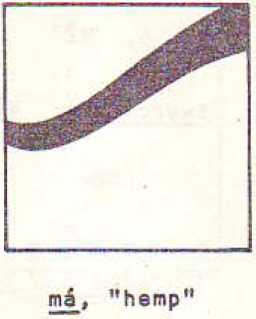
FALLING
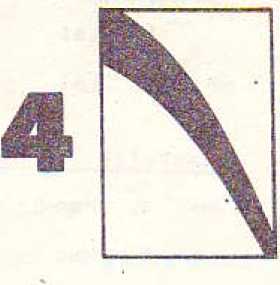
mà, ,T+o scold"
Exercise I: F5ng vs. Fáng
I . Fang 2. Fang 3.
6. Fang 7. Fang S.
Fang 4. Fang 5. Fang
Fang 9. Fang IO. Fang
|
Exercise 2: |
WSI vs |
. Wěi | |||||||
|
■■ |
- | ||||||||
|
1 . Wei |
2. |
We i |
3. |
Wei |
4. |
We I |
5. |
Wei | |
|
6. Wei |
7. |
We I |
fl. |
We I |
9. |
Wei |
10. |
Wei | |
|
Exercise 3: |
M f vs. |
MT | |||||||
|
— “ | |||||||||
|
1 . Mi |
2. |
Ml |
3. |
Ml |
4. |
Mi |
5 . |
MI | |
|
6* Mi |
7. |
MI |
fl. |
MI |
9. |
Ml |
10. |
Ml | |
|
Exercise 4: |
Wú vs. |
Wǔ | |||||||
|
1 . Wu |
2. |
Wu |
3. |
Wu |
4. |
Wu |
5 , |
Wu | |
|
6. Wu |
7. |
Wu |
■ fl. |
Wu |
9. |
Wu |
10. |
Wu | |
|
Exercise 5: |
YTn vs |
. Yìn | |||||||
|
---—a | |||||||||
|
I . Yin |
2. |
Yin |
3. |
Yin |
4. |
Yin |
5. |
Yin | |
|
6. Yin |
7. |
Yin |
fl. |
Yin |
9. |
Yin |
IO. |
Yin | |
|
Exercise ō: |
Lái vs |
. Làǐ | |||||||
|
1 . Lai |
2. |
Lai |
3. |
Laí |
4. |
Laí |
5. |
Lai | |
|
6. La i |
7. |
Laí |
6. |
Lal |
9, |
Laf |
10. |
Lal | |
|
Exercise 7: |
Hāo vs |
. Hao | |||||||
|
- | |||||||||
|
1. Hao |
2. Hao |
3. |
Hao |
4. |
Hao | ||||
|
5. Hao |
6. Hao |
7. |
Hao |
8. |
Hao | ||||
|
Exercise B: |
YT vs. |
Y í vs, |
YT |
vs. Yì | |||||
|
— |
'—■" |
■ | |||||||
|
1 . Yi |
2, |
YI |
3. |
YI |
4. |
YI |
5. |
YI | |
|
6. Yl |
7. |
Yi |
8. |
Yi |
9. |
Yl |
10. |
Yi | |
|
II. Yi |
12. |
YI |
13. |
YI |
14. |
YI |
15. |
Yl | |
|
ifl. YI |
17, |
YI |
18. |
YI |
19. |
YI |
20. |
Yi |
TAPE 2 WORKBOOK (CONSONANTS AND VOWELS I)
DISPLAY I: SINGLE VOWELS
|
Ch Inese Surname |
S i m11 ar Sound in English |
Or i entat i on Module Examp 1e |
|
Fffng |
Oki nawa |
tSF |
|
Mi |
Tahiti |
nī |
|
Hú |
Mono lulu |
Hú |
|
Hóng |
woman |
tóngzhl |
|
Ēn |
ch J cken |
ne |
Exerclse 1
|
1 . |
H____ng |
2. |
H____ng |
3. |
H___ng |
4. |
H___ng |
|
5, |
H___ng |
6. |
H___ng |
7, |
H___ng |
8. |
H____ng |
|
9. |
H____ng |
10. |
H__ng |
1 1 . |
H___ng |
12. |
H___ng |
Exercise 2
|
1. |
MS |
2. |
Yǐ |
3. |
Fti |
4. |
Lóng |
5. |
Há’’ |
|
6. |
Wú |
7. |
F3ng |
8. |
Ēn |
9. |
Lú |
10. |
Y6ng |
|
I 1 . |
MS ng |
12. |
in |
13. |
Yin |
14. |
Ming |
15. |
Hóng |
DISPLAY II: DIPHTHONGS
|
Ch Inese Surname |
S 1 m I1 ar Sound In English (with PTnyTn) |
Or Ien + atI on Modu1e Examp 1e |
|
LÌL |
Shanghai (Shanghai ) |
tàj_tal |
|
Ta 1 pe 1 (Tái t>S_í_) |
shé 1 | |
|
Hao |
Mao Tse-Tung (Máo Zédōng) |
h So |
|
Lóu |
Chou En-lal (ZhCu Enlál) |
nS izh5u |
|
Exercise 3 |
2. |
Fě I |
3. |
Máo |
4. |
Hóu |
5 . |
He | |
|
I . |
Màl | ||||||||
|
6. |
Hú |
7. |
Hā |
8. |
Lè 1 |
9. |
Lóu |
10. |
Měng |
|
1 1 . |
Méi |
12. |
LSo |
13. |
Lóng |
14. |
LT |
15. |
Ou |
|
16. |
W5I |
17. |
Ēn |
18. |
Nàī |
19. |
Yóng |
20. |
Hào |
DISPLAY III: SEMIVOWELS
|
Consonant A 1 one |
Semivowe1 A 1 one |
Consonant Plus Semivowel |
Orientation Modu1e Examp 1e |
|
Háng L,án Máo Láng |
Wáng Wán Yáo Yáng |
Hu_áng Li^án MJ_áo L^áng |
Gi^Sngzhōu xj_áoj I e |
Exercise 4
|
1. |
Hán |
2. |
Wán |
3. |
Huán |
4 . |
Láng |
5. |
Yáng |
|
6. |
L1 áng |
7. |
Luán |
8. |
MIfeo |
9. |
Huáng |
10. |
Lifeo |
|
11. |
Huá |
12. |
Huá i |
13. |
L 1 áng |
14. |
Luán |
15. |
Líào |
DISPLAY IV: IRREGULAR COMBINATIONS OF SEMIVOWEL AND VOWEL
|
Vowel Alone |
Semivowel Pius Vowel |
Or 1entatIon Module Examp 1e | |
|
Initial |
After Consonant | ||
|
E An Lóng |
Yfe Yán Wò |
Life Líán Luò |
X 1 fe X 1 6 Dfen 1 án w6 |
Exercise 5
|
1 . |
Yfe |
2. |
Yán |
3. |
wò |
4. |
Life |
5. |
L 1 án |
|
6. |
Luò |
7. |
LI áng |
8. |
Lóng |
9. |
N I fe |
10. |
Hé * |
|
II. |
Huò |
12. |
Yáng |
13. |
An |
14. |
Yfe |
15. |
N 1 án |
|
16. |
Wò |
17. |
È |
18. |
Luò |
19. |
L 1 án |
20. |
Life |
Exercise 6
|
1 . |
Fffng |
2. |
Lfiu |
3. |
Huáng |
4. |
Máo |
5. |
YT |
|
6. |
Wfel |
7. |
M t ào |
8. |
Luò |
9. |
Lá 1 |
10. |
Wú |
|
1 1 . |
Hóng |
12. |
L 1 áng |
13. |
Luán |
14. |
Wò |
15. |
Yán |
|
18. |
Yáng |
17. |
L I án |
10. |
Life |
19. |
Hé |
20. |
Yfe |
Exercise 7
|
1 . 5. |
F____n9 |
2. 6. |
M______ |
3. |
4. | ||
|
7 . |
% |
8. |
L | ||||
|
9. |
__n |
IO. |
ng |
1 1 . |
L n |
12. |
H___ng |
|
13. |
L ng |
14. |
Si |
15. |
L |
16. |
L |
|
17. |
H , _ng |
IS. |
L________ |
19. |
_____n |
20. |
L_______ |
TAPE 3 WORKBOOK (CONSONANTS AND VOWELS II)
Exercise I
|
1. |
Ā___ |
2 . |
Fá___ |
3. |
Fá___ |
4. |
Nó___ |
5. |
mS_ |
|
6. |
W3___ |
7. |
Yl___ |
8. |
Llá___ |
9. |
MT___ |
10. |
Llá |
|
1 . |
W5 |
12. |
Huá |
13. |
Yì |
14. |
Ná |
15. |
Huá |
DISPLAY I: STOPS
|
Unasp 1 rated |
Asp I rated |
Or ì entatI on |
Mode Ie |
Examp 1es |
|
BSn |
P3n |
BSoIán |
TàIg_íng |
Yáng1 |
|
DO ng |
Tōng |
Dan 1án |
t3 | |
|
63 |
K5 |
MS ?2_u6 |
KUnni f ng |
- |
Exercise 2
|
1. |
___Sn |
2. |
___Sn |
3. |
__Sng |
4. |
__ōng |
|
5. |
6. |
5ng |
7. |
3 |
8. |
3n | |
|
9. |
_5ng |
10. |
S |
1 1 . |
___3n |
12. |
___3 |
ExercIse 3
|
1. |
Be I |
2. |
Gōu |
3. |
Tú |
4. |
Péng |
|
5. |
Kòng |
6. |
DTng |
7. |
Plan |
8. |
Táo |
|
9, |
Kāng |
10. |
Dal |
1 1 . |
B I é |
12. |
Guó |
DISPLAY it: AFFRICATES
|
Unasp I rated |
Asp 1 rated |
Orientation Module Examples | |
|
Retrof1 ex Palatal Denta1 |
ZhSng J I Sng Zāng |
ChSng QJ áng C5ng |
tóngzhl ChéngdE2 JJàn gT záo Cīngzhōu2 |
DISPLAY III: /r/ AND THE RETROFLEX POSITION
|
Orientation Module Example | |||
|
Rú |
Zhú |
Ch ú |
rén tóngzhl ChéngdCT2 |
DISPLAY IV: THE PALATAL POSITION
|
YT |
JT |
QT |
Numbers Resource Module Examples yT (one) j I ǔ (nine) qt (seven) |
|
Exerc i |
se 4 | |||||
|
Retrof1 ex |
Pal ata 1 |
Retrof1 ex Pa i ata 1 | ||||
|
1. |
ZhSng |
J ī ang |
7, Zhang |
J i Bng | ||
|
2. |
Z lying |
J i 3ng |
3. Zhíng |
J I Sng | ||
|
3. |
ZhSng |
.J i a n g |
9. Z'hāng |
J i 3ng | ||
|
4, |
Zhang |
Jiang |
10. Zhang |
Ji3ng | ||
|
5. |
Zh3ng |
J í 3ng |
11« Zhang |
J i ang | ||
|
6. |
ZhSng |
J ì ang |
fZ. Zhang |
J 1 3ng | ||
|
Exercise 5 | ||||||
|
í . |
Zh3ng |
2, Jiang |
3. |
Q |
iáng 4. ChBng 5. JT | |
|
6. |
QT |
7. Rú |
8. |
Zh£í 9. Chu |
10. Zhào | |
|
i ! . |
Qíán |
12. Ren |
13, |
Chén 14, Jía |
15* R6ng | |
|
Exercise □ | ||||||
|
Retraf1 ex |
Pa 1 ata 1 |
De n t a j_ |
Retref 1 ex |
Pa I ata i Penta 1 | ||
|
1 . |
Zh3ng |
J 1 Sng |
Zang |
7, Zhang |
JÌSng Zāng | |
|
2, |
Zhang |
J J Sng |
Zing |
8. Zhang |
Jiang zang | |
|
3, |
ZhSng |
J 1 3ng |
Zang |
9, ZhSng |
Jiang Zāng | |
|
4. |
Zhang |
J i3ng |
Zang |
10. ZhSng |
J ISng ZSng | |
|
j. |
ZhSng |
J īang |
Zang |
I 1 . ZhSng |
J 13ng ZBng | |
|
6. |
Zhang |
J I Sng |
ZSng |
12. ZhSng , |
J 1Sng Z3ng | |
Exercise 7
|
1 , |
ZhSng |
2. |
J ì 3ng |
3. |
ZSng |
4, |
Chāng |
5. |
Q 1 éng |
|
6. |
Gang |
7. |
ZCu |
8. |
Cáo |
9, |
Chén |
10, |
Zhào |
|
1 1 * |
Qian |
12. |
JTn |
13, |
Rén |
14. |
QT |
15. |
Ch ū |
|
16. |
Zhú |
i 7. |
Rú |
18. |
JT |
19, |
CM |
20. |
Ze 1 |
Exercise 8
|
1. |
___5ng |
2. |
___Sng |
3. |
__1 Sng |
4 . |
__’áng |
|
5 . |
___5ng |
6. |
___5rg |
7 . |
__________ú |
a. |
____áo |
|
9. |
TSn |
10. |
_én |
1 1 . |
ú |
12. |
ǎi |
|
13. |
_T |
!4. |
_én |
15, |
àl |
16, |
_ào |
|
17, |
Tn |
18, |
________□ |
19, |
_____5u |
20. |
_______T |
TAPE 4 WORKBOOK (CONSONANTS AND VOWELS lit)
DISPLAY I: AFFRICATES AND FRICATIVES
|
AtfrI cates |
Fricatives | ||
|
Retrof1 ex |
Zji3ng |
ChSng |
ShSng |
|
Pa 1 ata 1 |
J I Sng |
2J Sng |
XI Sng |
|
Denta1 |
£Sng |
Cāng |
S3 ng |
Exercise í: ShSng vē. X ISng
|
Retrof1 ex |
Pa 1 ata 1 |
RetrofI ex |
Fa 1 ata 1 | ||||||
|
í. |
Shing |
XI Ing |
e. |
Shíng |
Xiang | ||||
|
2. |
ShSng |
Xling |
7. |
Shing |
Xllng | ||||
|
3. |
ShSng |
Xling |
a. |
Shing |
XI Sng | ||||
|
4. |
S filing |
XI Sng |
9. |
Shing |
XÍBng | ||||
|
5. |
Shing |
XI Sng |
10. |
Shing |
Xling | ||||
|
ExercI |
se 2; |
ìhSng vs, XISng vs. |
Sing |
* | |||||
|
Ratrof J bx |
Pa I ata I |
Penta L |
RetrofI ex |
Pa 1 ata 1 Penta 1 | |||||
|
i . |
Sh3ng |
Xling |
Sing |
e. |
Shing |
Xiang |
S3ng | ||
|
2. |
Ēhíng |
Xling |
S3ng |
7. |
ShSng |
XI Sng |
Sing | ||
|
3, |
S h in g |
XI ing |
Sing |
8, |
ShSng |
XI Sng |
Sing | ||
|
4. |
Shing |
XI Sng |
Sing |
9. |
ShSng |
XlSng |
Sing | ||
|
5. |
Shing |
XI Sng |
Sāng |
í0- |
ShSng |
Xīing |
Sāng | ||
|
Exercise 3 | |||||||||
|
1 * |
Shing |
2. |
Xlāng 3. |
S3ng |
4. |
SO 5. |
Shd 6. |
XTn | |
|
7. |
Shào |
8. |
Xlāo 9, |
Sòng |
ÍO. |
Xi à IL |
Su3 12. |
Shen | |
Pi
Exerclse 4
I. Zhao 2. XI3o 3. Cáo 4. Shào 5. Qiáo 6. JiSo
7. Cháo 3. Suǒ 9. Zuò 10. Càl II. ShQ 12, XTn
13. ZSng 14. Chú 15. JTn 16. Song 17, Zh3u IB. Qfn
ShT XT ST
|
Exerclse 5: |
XT vs. ST vs. ShT | |
|
——— - — |
—.—-- | |
|
1 . ShT |
2. XT |
3. ST 4. XT 5. ST 6. ShT |
|
7. ST |
3. ShT |
9. XT 10. ST 11. XT 12. ShT |
Rì běn
Exercise 6
|
1 . |
ShT |
2. ChT |
3. |
ZhT |
4. |
Rì3 |
5. |
XT |
6. |
or |
7. JT |
|
8. |
YT |
9. LT |
10. |
ST |
I 1 . |
zT |
12. |
Cf3 |
1 3, |
QT |
14. ChT |
|
15. |
ST |
16. Mi |
17. |
ZhT |
18. |
ZT |
19. |
JT |
20. |
Df |
21. Rì3 |
|
22. |
Cf3 |
23. XT |
24. |
ShT |
25. |
M í |
Exercise 7
|
1 . |
_______T |
2. |
________T |
3. |
______T |
4. |
___3ng |
|
5. |
____i 5 rig |
6. |
___Sng |
7. |
___3ng |
8, |
___Sng |
|
9. |
_l Sng |
10. |
__1 áng |
1 1 . |
___3ng |
12. |
___3ng |
Exercise 8
1 30
Pn
n
I. ________________
4, c h ~
7. i j;_______
10. z _______
15. z J
2, zh_2____
5. ch ______
8, ch 2
11. ch 2__
I 4 , y 2
5- q_________
6, th_2____
9, ______
12. zh_2____
15. z_________
J T
ChT
Rì*
TAPE 5 WORKBOOK (CONSONANTS AND VOWELS IV)
DISPLAY I
|
Ēn |
Wōn |
Hūn |
HuSn |
|
Fè í |
Wèf |
Gul |
Guèl |
|
Hòu |
You |
Llū |
LIŌu |
DISPLAY H
Yōu
L T ú
Yòu l r ìj
DISPLAY III
|
Wò |
Luò |
Mò | |||||
|
Exercise 1 | |||||||
|
1 . W3n |
2. |
Hūn |
3. Wèl |
4. |
Gul |
5. |
YÒu |
|
6. L1Ǔ |
7. |
Luò |
3. Mò |
9. |
Lún |
10. |
Nlú |
|
II. Rul |
12. |
Bó |
13. CuT |
14. |
Chūn |
15. |
QI ú |
|
Exercise 2 |
%. |
■% | |||||
|
1 , |
n |
2. |
n 3. |
4. | |||
|
5. |
6. |
* 1 7. |
1 |
8. | |||
|
9. 9____ 13. । |
10. |
_________' I 1 . |
n |
12. | |||
|
14. |
___2_n 15. |
16. |
1_________________________ |
DISPLAY IV
|
Li |
Lǔ |
LU | ||||||||||
|
Exerc i se |
3 |
a | ||||||||||
|
I . |
LI |
Lǔ |
Lu |
6. |
LT |
- |
Lǔ |
LU | ||||
|
2. |
LT |
Lū |
LU |
7. |
LT |
Lǔ |
LU | |||||
|
3. |
LT |
Lǔ |
V LU |
0. |
LT |
Lǔ |
LU | |||||
|
4. |
LT |
LG |
LU |
9. |
LT |
Lǔ |
LU | |||||
|
5. |
LI |
Lū |
LU |
IO. |
LT |
LǓ |
LU | |||||
|
Exercl se |
4 | |||||||||||
|
1 . |
LT |
2. |
Lǔ |
3. |
LU |
4. |
LǓ |
5. |
LU | |||
|
6. |
LT |
7. |
LÌJ |
0. |
LU |
9. |
LT |
0. |
LǓ | |||
DISPLAY V
|
YÚ Yuè YUán YUn |
DISPLAY VI
|
Yfe Wán Wén |
m | ||||||||
|
YUán YÚn |
Yán |
YUán | |||||||
|
Exercise 5 1. Shǔ |
2. |
Sǔ |
3. |
xù |
4. |
Wú |
5. |
YÚ | |
|
6. Zǔ |
7. |
Zhú |
3. |
JÚ |
9. |
Chú |
10. |
QÚ | |
|
1 |
. Mìi |
12. |
YÚ |
13. |
Ju |
14. |
QÚ |
15. |
XÚ |
Exercise 6
|
1. |
Shu |
2. |
Sù |
3. |
xù |
4 . |
Xú'ān |
|
5 . |
Shuàng |
6. |
ChUn |
7. |
jUn |
8 . |
Yliè |
|
9, |
què |
IO. |
LU |
1 1 . |
Lú |
12. |
YU |
|
13. |
JU |
14. |
Yìlán |
15. |
QUán |
16. |
Yun |
òr
TAPE 6 WORKBOOK (TONES IN COMBINATION)

f 51 le
DISPLAY I: THE NEUTRAL TONE

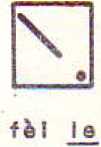
ExercIse I
|
1. |
FSi |
1 e |
2. |
Fél |
1 e |
3. |
Fěl |
1 e |
4. |
Ffel |
1 e |
|
5. |
Fě 1 |
I e |
6, |
Fél |
1 e |
7. |
Ffel |
1 e |
8, |
F51 |
le |
|
9. |
Fél |
1 e |
10, |
Fèl |
1 a |
1 1 . |
FSÍ |
I e |
12. |
Fél |
1 e |
DISPLAY II: THE HALF THIRD TONE

Té ì běI

BělJTng YSngp I ng BSodlng


NánhSl BělhSl
Exercise 2
|
1. |
Thibet |
2. |
Be i JTng |
3. |
Yóngp íng |
4. |
BelhSl |
|
5. |
Bāodlng |
6. |
Be 1hǎ1 |
7. |
Be IJTng |
8. |
Tálbèi |
|
9. |
Be Ihǎ1 |
10. |
BSodlng |
1 1 . |
YÓngping |
i2. |
Be i hǎI |
DISPLAY IV: TWO-TONE SEQUENCES (1)
|
1 |
2 |
3 |
4 |
0 | |
|
1 |
ShínxT |
Ktfnmí ng |
XIBnggSng |
KSIhuà |
FBI le |
|
2 |
YSn'ín |
Y 0 n n á n |
TálbSl |
Luódlng |
Féi le |
|
3 |
BSlJTng |
Yóngp f ng |
BSīhSl |
Guíngxl n |
Fèl le |
|
4 |
Si chuSn |
Rèhér* |
ShànghS1 |
Fèngyì |
Fàl le |
Exercise 3
|
1 . |
Shanx1 |
2. |
Feī le |
3. |
Luod1 ng |
4. |
Be 1 ha I |
|
5. |
Reher |
6. |
Sichuan |
7. |
YongpI ng |
9. |
Tai be! |
|
9. |
Ka I hua |
to. |
X1anggang |
1 1 . |
YUnnen |
12. |
Bel J 1 ng |
|
13. |
Eel le |
14. |
Shanghai |
15. |
Guangx1n |
16. |
Fel le |
|
17. |
ríunml ng |
18. |
Yan’an |
19. |
Fel le |
20. |
Fengy1 |
|
Exercise |
i 4 | ||||||
|
1. |
ShBnxT |
2, |
X 1 JJnggSng |
3. |
YAn’Sn |
4. |
Fél ie |
|
5. |
SichuSn |
6. |
Ktfnmf ng |
7. |
GuSngxln |
8. |
Fòngyl |
|
9. |
BólhSl |
10. |
Fěl le |
1 1 . |
YSngp f ng |
12. |
ShànghS1 |
|
13. |
FII le |
14. |
YÚnnán |
15. |
Télběl |
16. |
Luódln |
|
17. |
K31hua |
18. |
Fèi le |
19. |
Be IJTng |
20. |
Rèhér |
*ihis is the name of a former province.

DISPLAY V: TWO-TONE SEQUENCES (2)
|
1 |
2 |
3 |
4 |
0 | |
|
1 |
CSngzhōu |
ZhTf ú |
QTngdǎo |
85yl |
ESI le |
|
2 |
Zézhffu |
J iésh f |
Su I yUSn4 |
Méngzì |
Fél 1 e |
|
3 |
WìíchSng |
J 1ǔ16ng |
Pǔěr |
L&shùn |
Fě 1 le |
|
4 |
Z h feJ 1Sng |
YUè nán |
R1 běn |
Wànx1àn |
Fě 1 1 a |
Exercise 5
|
1 . |
Feí le |
2. |
YUenan |
3. |
Lilshun |
4. |
Wuchang |
|
5, |
Su i yllan |
6. |
Fel le |
7. |
Zhl fu |
8. |
Wanxlan |
|
9. |
ZhejIang |
IO. |
Fuer |
1 1 . |
Fel le |
12. |
J 1esh1 |
|
13. |
Bey 1 |
14. |
Cangzhou |
15, |
Rl ben |
16. |
Fel le |
|
17. |
J 1 u 1 ong |
18. |
Mengz1 |
19. |
Zezhou |
20. |
QIngdao |
|
Exerc1se |
> 6 | ||||||
|
I . |
Cffngzhōu |
2. |
ZhèJ ISng |
3. |
J 1 ǔ16ng |
4. |
Su Iytlín |
|
5. |
B5yl |
6. |
Wànxlàn |
7. |
Fě I le |
a. |
ZézhCu |
|
9. |
ZhTfú |
IO. |
Yilènán |
1 1 . |
Pǔǎr |
12. |
Méngzì |
|
13. |
Fēl le |
14, |
Fèl le |
15. |
WìíchSng |
16, |
J 1ésh í |
|
17. |
QTngdǎo |
18. |
R1 hěn |
19. |
LEfshùn |
20. |
Fél le |
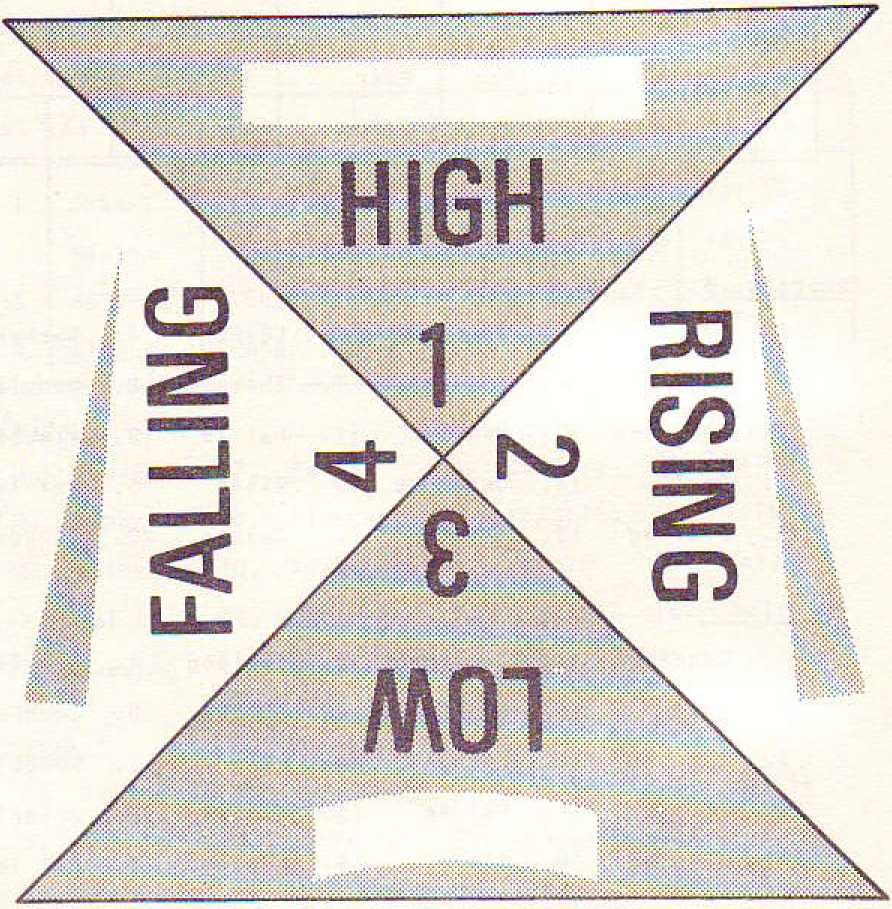
SUMMARY
Every syllable In Standard Chinese has one of four distinctive "tones" or patterns of pitch. The only exception to this rule is that a syllable loses Its inherent tone when It Is unstressed. The tone is just as much a part of a syllable as the consonants and vowels and performs the same function--sīgnaling the meaning of the syllable* In other words, difference In tone between two syllables can signal a difference In meaning, Just as a difference In consonants or vowels does.
It will be difficult at first to appreciate fully that a tone Is something that belongs to a syllable rather than something that merely happens to It. This Is because the only use of pitch patterns In English Is for Intonation of entire sentences, affecting only the meanings of whole sentences. For example, the rising pitch at the end of "Spinach Is delicious?" has nothing to do with the meaning of the word "delicious" but tells us that the whole sentence should be Interpreted as "Are you saying that spinach is delicious?" It may be difficult at first to remember the tone of a syllable as well as you remember the consonants and vowels. This Is because you have to develop the completely new habit of marking tones In your mental dictionary.

The Four Tones
Display I diagrams the pitch patterns of the four tones and gives their descriptive names and traditional numbers. As examples, four single-syllable words with completely different meanings but different to the ear only in their tones are pronounced at the beginning of the first P&R tape.
The tone diagrams may bo read as musical notations. The vertical dimension stands for pitch, with the top of the diagram slightly above your normal pitch range In English and the bottom slightly below. The horizontal dimension stands for duration. The thickness of the curve stands for loudness. These diagrams show the tones as they are heard In isolated syllables.
The High tone (or First tone) has a steady high pitch and average length. You may find It somewhat uncomfortable to pronounce at first, since a steady high pitch is seldom used In English—your only relevant experience comes from music. Notice that the accent mark which represents this tone In the romanization captures the level contour rather than the high pitch.
IG
The Rising tone (or Second tone) rises from the middle of the pitch range to the top. it too has average length. Unlike the rising Intonation used In English for questions, the Rising tone gets louder as It rises. Notice that the tone mark In the romanization rises from left to right.
I
d"
The Low tone (or Third tone) starts low, dips to the bottom of the pitch range, and then rises. The lowest part of this tone is the most distinctive, the part to focus on both when you are trying to pronounce the tone and when you are trying to recognize it. The lowest part takes the greatest effort and is the most, prominent, despite the fact that it Is actually not quite as loud as the rest of the tone. This part Is exaggerated, both in length and In pitch, when the syllable 1$ stressed for emphasis. Particularly with male speakers, it may have a harsh, scraping quality. The Low tone has greater than average length. In English a similar Intonation is sometimes used for "Well?” when you have been waiting to hear something. Notice that the tone mark captures the dipping pitch pattern.
The Falling tone (or Fourth tone) starts at the top of the pitch range end drops sharply to the bottom, diminishing in loudness as it drops. It has shorter than average length. In English the falling Intonation used for exclamations, as in "Well!” is similar, but the Falling tone starts higher and ends lower than all but our most emphatic exclamations. Notice that the tone mark falls from left to right.
The Neutral Tone
A syllable loses Its inherent tone when It Is unstressed. An unstressed syllable, besides being weak and hurried, will have a pitch that Is not something of Its own but rather something that Is imposed on It by the tones of the surrounding syllables, particularly by the tone of the preceding syllable. In such cases we say that the syllable has tost its full tone, that Its tone has been neutralized, or that it is in the Neutral tone, 5 (Th© Neutral tone Is taken up at the beginning of P&R Tape 6.)

fBi le fél le fěi I e

fèl le
Display II shows the pitch of the Neutral tone after each of the four tones. The examples are four verbs which differ only In their tones, each followed by a grammatical element In the Neutral tone, (Notice that ths Neutral tone Is indicated In the romanization by the absence of a tone mark.}
After the Falling tone (4), the pitch of the Neutral tone amounts to the end of the fall. After the other three tones, It amounts to a Jump back to, or slightly beyond, the middle of the pitch range. In the case of the Low tone (3), the Jump Is from the low point, since the Low tone has lost Its rising tail. The pitch of the Neutral tone may also be affected by the tone of a syllable which follows, moving the Neutral tone in the direction of the start of the following tone. However, a sequence of Neutral tones will stay at the same pitch or will drop gradually.
lāVfi
BS ,
There are a few syllables, most of them grammatical elements, which are always unstressed in normal speech and, therefore, are always In the Neutral tone. These syllables are exceptions to ths rule that every syllable has a basic full tone, a tone that may be neutralized but will reappear under stress. To make a comparison with English, it Is hard to say what the ’’neutral vowel1’ In the word ’’given” has been reduced from, since the ending -en is never stressed.
Tone Changes
3
It rhe >m The a 1 on
it y.
The Low tone pronounced in isolation has a dipping-rising pitch pattern. This is the shape It always has before a pause. But the Low tone loses Its rising tall before a Neutral tone, and Display III shows that the Low tone also loses its tail before any non-Low tone. This display further shows that something even more unexpected happens to a Low tone before another Low tone* It changes to a Rising tone, or at least to something so close to a Rising tone that even native speakers cannot tell the difference. A Low tone which has lost Its rising tail before a different tone Is still recognizable, or Is even more recognizable, as a Low tone. But a Low tone which has changed to a Rising tone before another Low tone is no longer recognizable. What you will hear for ”i’m fine11 Is Wó hSo. The only way you can tell that the first word Is reaI Iy w& Ts by hearing It when It is not followed by a Low tone. Another quirk of the Low tone Is that ft sometimes changes to a Rising tone before a neutralized Low tone. Whether this happens or not depends on considerations of grammar and word formation. It always happens, for example, when the syllables are separate words, as with the words qTmg j " + o ask,” and nl, ’’you,” In the expression Qí ng n I . . ., which means ”(1) ask you (to do such-and-such)1’ or ”Rlease (do such-and-such).” ft does not happen in J 1SJ ie (from J i ěj i S), "older sister.” (The exceptional behavior of the Low tone is taken up In the sixth tape of this module, right after the section on the Neutral tone.) .

Bè!JTng
YSngp íng
BāThĚI
Bāodlng
There are certain other tone changes that take place in longer sequences of syllables. The main example of this is that a Rising tone changes to a High tone when 1+ follows a High tone or Rising tone and is fol lowed by any fuI I tone. For Instance, J I5ná dà, ’’Canada,” Is pronounced J ISnSdà. Using tone marks, the rule may be expressed tike this:
” ' ” becomes - - - * becomes
~ ‘ becomes ~ ~ ■ becomes
” ' * becomes * * v ' * becomes
" ' ' becomes - - * * becomes
However, these tone changes will be studied only after you have gained control of two-syilable sequences.
There are also cases where particular words change their tones under the Influence of following tones. The number I Is y T when It Is pronounced alone or as one of a series of digits. It Is yt before a Falling tone or neutralized Falling tone, and yì before any other tone. The numbers 7, qT, and 8, bS, are q f and bá before a Falling tone for most speakers. The negative marker bǔ Is bú before a Falling tone or neutralized Falling tone. in this course you will find bú quite a few times before you find bù, but keep in mind that bù is the more basic form. "No," for example, Is bù.
Tone Weakening and Strengthening
in addition to the dramatic tone changes discussed previously, there are certain minor automatic changes which affect all full tones In words of two or more syllables. These Involve all three factors shown in the tone dIagram--Ioudness, pitch, and length.
Let's start with a similar phenomenon In English, In an English word of two or more syllables, the syllables vary In how forceful they are and how much emphasis they receive. We normally think of these levels of "stress" In terms of the loudness of the syllable, but other factors, Including syllable length and pitch, are even more Important. The one thing you need to know about the stress pattern of an English word Is which syllable has the main stress. This syllable will have the same weight as a single-syllable word pronounced alone. The stress levels of the other syllables, down to the level we call "unstressed," will then fall Into place almost automatically.
For tons
iave
IF
ng e, The id '1 mes ilc
Flit o I va
i*
in
»
fe oud-
>u
। the
i
a I I
Examples such as "PHO-to-graph," "pho-TOG-ra-phy," and "pho-to-GRAPH-ic" tel 1 you al I you need to know about the stress patterns of these words.
The best way to approach the stress patterns of Chinese words Is the other way around. The first thing to find out Is whether any of the syllables are unstressed, that is, whether any are In the Neutral tone. (By far the most likely candidate is the last syllable.) Then the stress levels of the remaining, full-tons syllables will fall Into place according to the following rules:
I. The first full-tone syllable will have normal stress, the same as when It Is pronounced.
2. The last full-tone syllable (if there is more than one) will have heavIer-than-normaI stress. Its loudness, pitch range, and length will be exaggerated.
3, Any middle syllables will have I Ighter-than-normaI stress. Their loudness, pitch range, and length will be reduced.
Let’s take, as an example, the Chinese phonetic equivalent of '’Italy," Y ì d à 11 . All three syllables have full Falling tones, but notice 1n the dIagram below that the three pitch patterns are slightly different: the first one is normal; the middle one Is reduced; and the last one Is exaggerated.
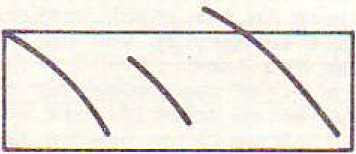
-dà- -11

The few exceptions to these rules for relative levels of stress are due to meaning. One such exception Is that the first of two full-tone syllables may be given the heavIer-than-normaI stress If the first syllable Is more significant. For example, the word for ’'Germany" is pronounced by most speakers as Déguó. The syllable De- Identifies the country (It Is derived phonetically from Deutsch land), while -guó, "country,” is used In the names of many countries. Thus the first Rising-tone syllable Is stronger, in violation of the general rules for stress patterns.
Dé-
-guó
The subordinate status of -guó In the names of countries Is most clearly seen by the fact that some speakers treat It almost as a suffix, pronouncing It Tn the Neutral tone, so that "Germany" becomes Oéguo.
As with English levels of stress, these differences are fairly subtle. You may not be able to hear them too clearly, and you can make yourself understood well enough even without getting them quite right, although you are likely to sound like a computer. You should be able to learn stress patterns without even thinking about them If you will try to mimic Chinese speakers as closely as possible.
After learning more about consonants and vowels In the next section of this summary, you will be Introduced to sentence intonation in the last section, where you will find that there are further modifications In the pitch patterns of the tones. If you are reading this summary as you begin the course, new Information Is piling up too fast. Don’t try to keep everything In mind at once. As a first approximation of the tones, for example, try giving your syllables Identifiable and correct tones. When you have mastered that, work on one or two more points. Meanwhile, your ear will have begun to lock Tn on what Chinese sounds like, and you will begin to reach the point of automatic control.
Much of the structural simplicity of the Chinese language is made evident by traditional analysis of syllable structure. Start with the syllables which are different to the ear. There are only about 1,300 such distinguishable syllables, not nearly as many as In English. (Many syllables which sound alike carry more than one meaning and are written with different characters for each meaning, much as the same English spoken syllable carries the three meanings represented by the spellings "two," "too," and "to.")
most as iny”
i
'>
it
I ke
•hout
>eakers
next
I n-
i are f
if or
In
:amp I e, lhen
m-■ ounds
itroI .
ige e.
iere ir I y irry ers
|
DISPLAY IV: INITIAL-FINAL COMBINATIONS * |
- |
c :3 |
.3 |
9 |
c X |
3 >. | ||||||||||||||||||
|
e :□ |
3 |
G |
X | |||||||||||||||||||||
|
it :□ |
3 C |
13 |
b 2. |
9 |
M |
«s >. | ||||||||||||||||||
|
:3 |
C |
-.3 |
,2. |
9 |
3 It |
X | ||||||||||||||||||
|
- |
x |
* |
s ǎr |
M 1 |
>. | |||||||||||||||||||
|
C |
u |
c |
c |
c |
c |
X G |
X C |
X |
X 'y |
5 X |
E | |||||||||||||
|
c |
X c |
X |
- |
.5 |
X 'r |
r .2 X |
s >. | |||||||||||||||||
|
c |
c |
£ |
C |
c |
G |
.s |
'9 |
E X |
X | |||||||||||||||
|
X |
c g |
c £ |
3 a. |
2 c |
s ■5 |
C X |
.2 9 |
M | ||||||||||||||||
|
o |
1 |
c |
■G |
.2 |
.3 |
‘9 |
’x |
8 X | ||||||||||||||||
|
.ft |
E |
2» |
o 'c |
.1 ■© |
.3 |
J |
.1 |
0* '& |
• | |||||||||||||||
|
0 •: Ě |
3 £ |
i |
c |
ì T> |
■3 |
2 |
c 2 |
0 .2 |
s X |
s | ||||||||||||||
|
.3 |
-3 |
J! |
.2 9 |
'x |
X | |||||||||||||||||||
|
— |
i |
£ |
Q. |
c. |
- |
•- |
— |
'&■ |
s |
X | ||||||||||||||
|
3 |
3 |
I | ||||||||||||||||||||||
|
S 3 |
X í |
X 3 X |
G 3 J2 |
X G =. N |
C 1 |
X ■5 |
X í | |||||||||||||||||
|
3 |
■o |
3 |
C |
a |
3 -X |
G 3 JZ |
M |
3 U |
I |
M |
G X U |
c 3 ■s |
§ |
í | ||||||||||
|
G 3 |
| c |
■o |
3 |
G 3 |
X |
-X |
c N |
i |
s 3 |
G N |
G V |
C 3 ■5 |
G 3 |
c | ||||||||||
|
s □ |
•o |
3 |
ā |
-X |
3 |
u |
3 |
‘5 N |
X V |
-a |
Ē |
S M | ||||||||||||
|
3 |
a |
X -X |
1 JZ |
8 ■5 |
o |
■6 |
g | |||||||||||||||||
|
3 |
c |
£ |
ì |
3 |
3 C |
3 3 ■o |
3 |
5 |
X |
-X |
0 3 JC |
Ō N |
0 3 |
e 3 |
e N |
O 3 u |
0 •5 |
§ |
9 > | |||||
|
X |
X ā |
« -X |
"n |
V |
? |
s | ||||||||||||||||||
|
3 |
c |
£ |
3 |
3 |
3 |
3 |
3 |
3 |
X |
3 JX |
X |
N |
c |
3 |
3 M |
3 X |
3 •5 |
3 |
? | |||||
|
T c c X |
£ |
6 |
X "6 |
X G |
X c |
? o X |
8 c JC |
0 X |
X 0 N |
8 ī |
f |
5 c N |
X I 0 u |
C | ||||||||||
|
X c |
1 |
I |
X i |
X 1 c |
u G ■8 |
X c 01 w |
X J |
X Si |
X £ -X |
X G X |
c 8 |
8 8 |
X I |
J N |
X = J |
X c % -s |
c e |
X £ | ||||||
|
8 |
c |
X 1 |
1 |
X ■t |
u c X e |
X |
X |
X G X |
X G |
X c -X |
X X |
X = |
X •s |
2 |
G N |
X X |
s ■5 |
X |
£ | |||||
|
v |
c |
ī |
I |
c |
i |
G Si |
s -X |
s a> X |
! |
s u |
c |
N |
£ |
c ■s |
8 |
c > | ||||||||
|
* |
E |
c |
1 |
c |
c |
X |
X —- |
C X |
c X |
J |
I |
= |
X |
I |
1 N |
G X |
G ■s |
C |
s | |||||
|
2 |
3 i |
3 i |
2 |
c |
2 X |
3 |
2 |
& |
8 |
2 X |
3 N |
2 2 |
2 X K |
2 •C |
X |
2 |
0 | |||||||
|
c |
c |
j |
i |
e |
ī |
« |
s |
c & |
X |
i |
i |
3 J M |
5 -C |
■5 |
J |
0 « | ||||||||
|
5 |
E |
1 |
8. |
cf i |
G |
'í X |
£ |
ā |
£ -X |
I |
*s N |
1 M |
£ -5 |
5 | ||||||||||
|
2 |
c |
J |
C |
X |
2 |
X |
ā |
JC |
X |
5 |
X |
ī |
X K |
£ |
1 |
'5 | ||||||||
|
t | ||||||||||||||||||||||||
|
- |
N |
r |
‘2 |
*N |
£ |
í |
s | |||||||||||||||||
|
* |
* |
£ |
V |
a |
jí |
M |
a> |
7 |
N . |
X |
t |
*> | ||||||||||||
|
X |
= |
- |
- |
•» |
= |
T |
X |
- - |
3 |
£ |
X |
S |
X |
3 |
N |
■5 | ||||||||
|
E |
- |
e. |
c |
X |
- |
X |
jt |
- |
K |
V |
a |
*S |
X |
5 |
*. |
— |
9 |
X | ||||||
|
* | ||||||||||||||||||||||||
Adapted front Elementary ChintK- Pelting. China
DISPLAY V; INITIALS
|
Stops |
Affricates |
Fricatives |
Liquids |
Nasals | |||
|
Unaspirated |
Aspirated |
Unaspirated |
Aspirated | ||||
|
Labials |
b |
P |
f |
m | |||
|
Alveoìars |
d |
t |
1 |
n | |||
|
Velars |
g |
k |
h | ||||
|
Dentals |
ī |
c |
s | ||||
|
Re tr of Lexes |
zh |
ch |
sh |
r | |||
|
Palatals |
i |
q |
X |
________.________________________________________, | |||
P&R MODULE
DISPLAY V3: FINALS
|
Vowels Alone |
Vowels Plus Consonants |
Diphthongs | |||||||||||
|
0-Row |
(s)-i (r)-j |
■a a |
e |
-an an |
-ang ang |
-en en |
-eng eng |
er |
-ong |
-ai ai |
-ao ao |
-ei ei |
-ou pu |
|
U-Row |
-u wu |
-ua wa |
-uqAq wo |
-uan wan |
-uang wang |
-u_n wen |
(weng) |
-uai wa: |
• |
-u i wei | |||
|
J-Row |
■i yi |
-ia ya |
-ie ye |
■ian yan |
-iang yang |
-in yin |
-ing ying |
-iong yong |
(yai) |
-iao yao |
-i_u you | ||
|
0-R.ow |
-ii yù |
-iie yíie |
■iian yuan |
■tin yǔn | |||||||||
PSR MODULE
tn this chart, vowel letters which do not have their “standard” sound values are underlined. The standard sound values are taken to be the ones they have standing alone as finals after n : na (as in “Okinawa”), ne (as in “cinema7*), ni (as in “Bikini”), nu (as in “Ainu,” “canog”), and nu (as in no English word). The letter a is not taken to have a standard sound value. Vowel letters which have been dropped in abbreviations are indicated by underlined spaces.
Before .-i, (s > stands for all denial consonants and (r) for all retroflex consonants.
Hyphens mark spellings after initials.
Finals with r suffixes are not shown.
Then, strip off the four tones. This leaves you with about 400 different strings of consonant and vowel sounds. (See Display IV.)
Next, strip off any Initial consonants, or Initials, of which there are 21. (See Display V and Appendix I, the latter providing an alphabetical list of the Initials.) What is left are the finals. There are less than 40 different finals--a manageable number.
Last, classify the finals by their medials, that Is, In PTnyTn romanization, by whether the final starts with u_ (or w), with I (or y_), with u (or yíí 1, or with none of the above.6 This gives you four classes which are useful when you talk about how the finals combine with the Initials. You also cross-cI assify the finals by what follows the medials. (See Display VI and Appendix II, the latter providing an alphabetical list of the finals.)
A. Plain Finals
Let’s take a closer look at the structure of the final. Every final, and hence every syllable, has at least a vowel. Here are five vowels which can stand alone as finals, either with or without initials:
ENGLISH EQUIVALENTS
|
mā |
(’■horse") |
as |
i n |
"Ma" |
|
d£ |
("virtue") |
as |
1 n |
"Adel 1ne" |
|
("you") |
as |
1 n |
"blkin£" | |
|
bì |
("no") |
as |
1 n |
"Budapest" |
|
nU7 |
("woman" ) |
no |
English equivalent | |
about
of tter left
AM of the English equivalents in the examples are, of course, approximate at best and will be further off If your pronunciation does not happen to be the most standard American pronunciation. The vowel /u/, for example, is rather different from Its equivalent in "Budapest,” even for people who start the name the way they start ’’boot^.* For someone who starts ’’Budapest11 the way he starts "beāīTtythe comparison is way, off. The Chinese vowel Is pronounced with the tongue farther back In the mouth and with the lips more rounded.
' n
* w), Th I s
■ how
í i f y id
■he
There is no English equivalent for /u/, which Is pronounced with the tongue in position for 71/ and the lips In position for /u/, simultaneously. it Is not the same as the first vowel in "Utah," which Is pronounced with the tips In position for /u/D but with the tongue gliding from the position for /I/ to the position for / «j /.
The vowels /!/, /u/, and /íi/ are written y I , wu, and yU whan they do not follow an initial, In most cases, you wl iT not be able to hear separate sounds co r respond I ng to and w, as you can hear in the English words ”ye'T and "woo.” The three vowels are discussed again in the summary sections on u_ finals, j_ finals, and tl finals.
There are two more vowel sounds which can stand alone as finals, one of them only after initials. Confusingly, both sounds are represented by the letter 1 (already seen as standing for the vowel 71/ In "Tahiti”], The letter preceding the j_ determines which vowel sound Is to be used.
After a consonant pronounced with the tongue In the /s/ position (see page 42), i stands for a vowel pronounced with the tongue as close as possible to the /s/ position. Many Americans have a similar vowel in "Just a moment,” often indicated by the spelling ”jíst.IT For example:
sl_ ("tour”) approximately as 1 n "jj_st"
After a consonant pronounced with the tongue In the /r/ position, that Is, with the tongue strongly curled back (see page 42), i stands for □ vowel which Is simply a prolonged /r/ sound. FoF example:
he nd
d
shí ("ten") approximately as In "washer"
When there Is no initial consonant sound before this vowel, the letter r_ Is written; r I, The r_tells you how to pronounce the I; It doss not stand for a separate sound. The whole syiiFble is one prolonged /r/ sound.
Everywhere else, _I_ stands for the "standard” /I/, as In "Tahiti
A final may also consist of a vowel followed by a consonant, either ZnZ* or /ng/ (or Zr/, but this has a rather different status). Here are examples of all the ways the vowels presented thus far can combine with /n/ and /ng/:
|
5n |
("peace") |
as |
1 n |
"Onta r i o" |
|
máng |
("busy") |
ZaZ |
as |
In "Me" + ZngZ |
|
fSn |
("cent") |
35 |
1 n |
"fun.," "chicken.” |
|
1 áng |
("co 1 d") |
as |
1 n |
"1u n g” |
|
mtn |
("peop1e") |
as |
1 n |
"mean" |
|
mf ng |
("bright") |
ZtZ |
as |
In "am£no" t ZngZ |
|
j (Tn |
("ml 1Itary") |
ZUZ |
+ |
ZnZ |
The analysis of /Un/ as simply ZU/ plus ZnZ will not always hold up. Especially when there is no Initial , you may hear a weak vowel Ze/ sneak In before the ZnZ, so that ZilnZ almost rhymes with Zen/.
There is also a final written ong in which the o_ stands for a vowel very much like ZuZ. Actually, it Is closer to the vowel sound in "good" than to the vowel In "food."
There is built-in ZrZ, tongue, as In
6r
I óng (’’dragon") ZoZ as In "woman" + /ng/ one final In which the vowel ZeZ is followed by a pronounced with a strong curling back of the the Eng I Ish "her."
("ear") as In "ermine"
Other syllables which end the suffix £. For example:
nǎr ("where")
In ZrZ have been formed by adding
as in "Na re I ssus"
*The consonant ZnZ at the end of a syllable may sound a little like /ngZ when the next syllable starts with an Zh/ or a vowel sound, as In hen háo, "very good," and Yán1Sn, "Yenan." Actually, however, this variant of ZnZ, pronounced with the tongue not touching the roof of the mouth, Is quite distinguishable from ZngZ, pronounced with the back of the tongue touching. Notice in the romanization Yán’5n that an apostrophe shows which syllable the n_ belongs to.
sonant, it
ie nted
In many cases, adding an /r/ suffix has a considerable effect on the final, knocking out an /n/ or /ng/ and changing the vowel, for example. (You will deal with these Instances on a case*by-case basis In the course.! The /r/ suffix Is most popular In the Peking dialect but is one feature of that dialect that has not been widely accepted as a national norm.
I ways a
s for vowe I
A final may also consist of a diphthong, that Is, a vowel followed by a weaker glide to the position of /!/ or /□/.
|
(Similar diphthongs exist |
In Eng 1 Ish.) |
There are four such |
|
finals: hǎj_ ("sea") |
as 1 n |
"Shanghai" "high" |
|
máo ("hair") |
as 1 n |
"Mao Tse-tung," "mouth |
|
lèl_ ("tired") dōu ("all”) These diphthongs are best |
as In "1 e I , " "si sigh" as In "sou 1 ," "dough" learned as units. If we look at the | |
Individual letters, however, we notice that the letter o has a different sound value in ou than in ao and ong, and thaF the letter £ has a different sound value In eI than In e, en, and eng.
by a
A final may also consist of any of the above types (vowel alone, vowel plus consonant, or diphthong) preceded by a medial, that is, by a weak version of one of the vowels /u/, /I/, and /U/. The medlals /u/ and /!/ are like the English semivowels written w and in "wet” and T,yet" and written £ and J_ In "Jaguar"“and "onion." Finals starting with theTe three medíals are discussed In the next three summary sections.
dd I ng
B. u Finals
You have heard and seen the full vowel /u/ following an Initial In the word bù, "no." When the vowel does not follow ■ an initial, it is written wu_.
wú ("five") as In 11 o o ze” or "woo11
As suggested by the English equivalents, you may or may not hear a /w/ sound before the /u/.
tie we I
tua 1 Iy, t
om
I ce
A /w/ sound may also occur before other vowels at the beginning of a final. The sound Is written u_ when It follows an Initial and w when It does not. (Since the sound Is a weak version of the vowei /u/, the sound will be called medial /u/.) In the following examples of finals which start with the media! /u/, some have Initials and therefore use the u spelling. Some have no initials and therefore use the w_ spelling.
huà ("speech") as In "qua I 1 ty"
wò ( " I " ) as In "wa I ।8
Notice that the letter o In wo and uo Is used for yet another vowel sound, roughly the" voweT In the English word "saw," The spelling uo Is abbreviated to o after the initials written rn, b, £, and f (the labial consonants, involving the lips). The medTal sound Is still there, however, so that mo, "Ink," Is* pronounced as If It were spelled muò■
huàn ("exchange") as In "quant Ity," "wan," "Juan"
wáng ("king") as in "Wong," Zua/ as In
"quajTty* + /ng/
wèn ("ask") as In "Owen," "won"
(There Is a very rare final weng ■ )
You would expect wen to be spelled uen after Initials, but it Is abbreviated to un: han, "mix up." You can still hear the vowel /e/, however. TFTe s y I tables written hun and wfen rhyme. Notice that the tone mark In hùn has been shifted to the only remaining vowel letter.
Huá1 (name of a river) as In "Waikiki ," "why"
wòI ("stomach") as In "we I gh"
Again, you would expect we 1 to be written ue1 after initials, but it Is abbreviated to u 1 ; dul , "correct/" You can still hear the diphthong /el/, however. The syllables written duì and wè1 rhyme. (There is some Justification for this spelling. In the High and Rising tones, this final does sound quite like the English pronoun "we," as the spelling uì would suggest.) Notice that the tone mark in duì has been shlTTed to the last available vowel letter.
* i sc
a<
।
A
It
f
I
5
T
ft II E I v
er
Fhe
The
As suggested by the English equivalents, you may or may not hear a /y/ sound before the /I/ In y I . You will usually hear a /y/ sound before the /!/ in yTn and y í ng, and the vowel Itself is more like the "short1' English vowel In "s£n" and "sj_ng."
"Juan"
A /y/ sound may also occur before other vowels at the beginning of a final. The sound is written i when It follows an Initial and when It does not. (Since tKe sound Is a weak version of the vowel /I/, the sound will be called medial Zi/,) In the following examples of finals which start with the medial /I/, some have initials and therefore use the I spelling. Some have no Initials and therefore use the spellTng.
yá ("tooth”J as In "Yamaha,w "yahoo”
yfe ("also") as In "ye I I ow11
t Is we I
I ce n ī ng
As you have seen, In the finals written e, an, and eng, the letter e_ stands for a vowel like the e In "ch 1 cken .ir"J Not Ice that In the final written ye or Te the letter e stands9 for a vowel like the e_ In "hen.” iThis”Ts the same vowel sound e stands for in the diphthong written e I . In other words, an i or In the final means that e_ stands for the vowel of "han. "T
nIán9 ("year") as In "yen"
In this final written Ian or yan, the letter a has an exceptional sound value, essentially the vowel In the EngĒlsh word "hen.”
hear *6 í rhe
FI co able
yéng (["Yin 6] Yang") ZyZ + /a/ as in "Ma” + ZngZī
as In "Yonkers"
Yòng ("use") , ZyZ + /o/ as In "woman" + /ng/
yào ("want") as In "yow I"
yòu ("again") as In "yeoman"
‘ight."
Yet again, you would expect the final you to be written Iou after Initials, but It Is abbreviated to I u : IIù, "six." You can still hear the diphthong /ou/, however. TTù and yòu rhyme. In the High and Rising tones this final does sound quite like the English pronoun "you," as suggested by the spelling iu. Notice that the tone mark In ìIù has been shifted to the last available vowel letter.
There is a very rare final ya I , not shown In Display IV.
0. u Finals
The full vowel ZuZ following an initial occurs In the syllable nú, "woman.” When it does not follow an initial, it Is written yti.
yū ("rain”) no English equivalent
yUn ("rhyme”) /uZ + ZnZ
You may or may not hear something like a ZyZ sound before the /(I/, which Is pronounced with the tongue position of Z i / and the lip position of ZuZ.
A weak version of the vowel ZuZ, which will be called medial ZU/, may occur before other vowels at the beginning of a final. The sound Is written u_ when it follows an initial and ytī when It does not. One of the following examples of finals which start with the medial ZuZ has an Initial; therefore the U spelling is used. The other example has no initial, however; therefore the yU spelling Is used.
jué ("definitely") ZU/ + Ze/ as in "hen”
Notice that the letter e_ in this final stands for a vowel sound like the one In the English word "hen," as does In the final spel led ye or Ie and tn the final spe! led e_i_. ZU/ has the same effect as /!/ because the same tongue position is used to produce both.
yUán ("garden”) /ií/ + /an/ as in the British
"answer"
Instead of rhyming this final with the final written an, some speakers rhyme y U á n with the final written yen or i an, using the vowel sound of the English "hen."
Each group of initial consonants In the following summary sections (A through F) contains one consonant which Is distinctively "aspirated" and one which Is distinctively "unasp 1 rated.”
The aspirated consonants explode with .a strong puff of air. In English, the consonants written t, _k (or c, as in "cow," or cp, and ch are lightly aspirated at the beginning of a word, as you can tell if you hold the back of your hand to your mouth while saying "pa," These same letters, including the combination ch, are used to romanize the distinctively, more strongly aspirated Chinese consonants.
Unaspirated consonants explode without a puff of air, The English lightly aspirated consonants become unaspirated after /s/, as you can tell If you say "pa11 and "spa11 against the back of your hand. This Is an automatic adjustment for English speakers, and It will take practice to learn to pronounce English aspirated consonants as unaspirated when there Is no /s/ to trigger the adjustment.
English has a series of "voiced” consonants which are pronounced with vibration of the vocal cords. These Include consonants written b_, d_, g (as In both ''Gary” and "Gerry"), I (as In "Jerry"), and z. These same letters plus the combination zh are used to romaníze the unvoiced, distinctively unaspirated Chinese consonants.
The consonants which are neither distinctively aspirated nor distinctively unaspirated are the ones which can be prolonged, such as /s/, /I/, and /n/.
So far consonants have been grouped In terms of the general manner In which they are produced. Now they will be grouped In terms of the tongue and lip positions used In producing them.
A . Initials m, b, p, f ( L a b i a I )
These are pronounced In the positions suggested by the Ietters.
|
màn |
(" |
10,000") |
as |
1 n |
"ml 11" | |||
|
ban |
C” |
half") |
as |
1 n |
"bl II," |
but |
not |
vo1ced |
|
<" |
divide") |
as |
I n |
"£j II," |
but |
more |
asp 1 rated | |
|
fan |
(" |
cooked rice") |
as |
In |
"fj 1 1” | |||
|
These Initials |
are |
never fo11 owed |
by |
the |
med I a 1 |
/u/ |
or by |
the |
|
vowel or medial |
/ÍI/ |
. Additionally |
t /f/ |
is never |
fo11 owed |
by the. | ||
vowel or medial /!/. (See Display IV.)
B. Initials n, d, t, I (Alveolar)
|
These are pronounced in the positions suggested |
by the | ||||
|
1etters. n_à |
("that") |
as |
I n |
"n 1 1" | |
|
dà |
("big") |
as |
1 n |
"dj II," but |
unvoiced |
|
tff |
("he") |
as |
1 n |
"til 1 but |
more |
|
("pul 1") |
asp 1 rated as In "JJ 1" | ||||
/D/ and / + / are never followed by the vowel or medial / tī /. /N/ and /I/ are the only Initials which may be followed either by the vowel or medial /il/ or by the vowel or medial /□/. (See Display IV.)
|
C, Initials g, k, h (Velar) |
positions suggested by the | ||||||
|
These are Ietters. s> kà há These Initials |
pronounced In the ("piece1') ("1esson") ("with") are never followed Display IV.) | ||||||
|
as as as by |
1 n "£Ì II,” but unvo1ced in "Iklll," but more aspirated 1 n "hj II," but harsher | ||||||
|
the |
vowels and |
med lais /1 / | |||||
|
and |
/u/, |
(See | |||||
|
D. Initials z, c, s (Dental |
/5/ |
Position) | |||||
|
To |
These are Z3ng CSng SSng an English |
pronounced as Indicated by (surname) as In " (surname) as in" (surname) as in" speaker, the spelling z Is |
the English equivalents, beds," but unvoiced bets," but more aspirated Bess," but stronger only suggestive, and | ||||
the spelling c Is quite arbitrary. LJke the velars (/g/, /k/, /h/ìt these Initials are never followed by the vowels and medials /I/ and /(I/, (Display IV)
As mentioned previously, the letter J_ after these /s/-posltlon sounds stands for a vowel with the tongue as close as possible to the /s/ position.
E. !n111 a Is zh, ch, sh, r (Retroflex, or /r/ Position)
IBljTZZJ SBH '
These are pronounced as Indicated by the English equivalents, but with the tongue strongly curled back towards the position for /r/.
|
ZhSng |
(surname) |
as in but unvoiced |
|
ChSng |
(su rname) |
as Tn "chaw," but more a sp1rāTed |
|
Shīng |
(su rname) |
as In "Shaw" |
|
rang |
("al low") |
as in "raw” |
Like the velars (ZgZ, I'fJ, ZhZ) and dentals (hi, /cf, Zs/), these Initials are never followed by the vowels and medlals ZIZ and ZUZ. (Display IV)
Some speakers pronounce ZrZ with a certain amount of friction so that it Is somewhat like the ZsZ sound In "measure." Notice that the unfamiliar zh spelling Is only suggestTve. The letter h_ after a consonant Tn’dlcates a pronunciation In the ZrZ pos111 on,
As mentioned previously, the letter I after these ZrZ-position sounds stands for a vowel which Ts a prolonged ZrZ.
sted
f
F. Initials j, q, * (Palatal, or ZIZ Position)
These are pronounced as indicated by the English equivalents, but with the tongue pushed forward towards the position for ZI Z.
its .
>ted
I S
|
JJ 5ng |
(surname) |
as tn ''Jeep,’1 but unvoiced |
|
SJáng |
(surname) |
as In ’’cheap,1’ but more asp 1raTed |
|
XISng |
(surname) |
between the ZshZ of ’’sheep” and the ZsZ of "£ee'pTr |
The palatals are followed only by the vowels and medlals ZIZ and ZUZ. (See Display IV,} Pay particular attention to the spellings £ and x, since they are quite arbitrary to speakers of English.
With the palatals, this survey of the consonants Is completed. Let’s summarize the relationship between groups of consonants and the different sound values of the letter I:
ts.
|
AFTER |
WHICH ARE PRO-NOUNCED WITH The tongue |
ZIZ IS PRONOUNCED W"íTH_ TP’R-CTE'' |
AS IN THE SURNAME |
|
ZzZ. ZcZ, / sZ |
In the ZsZ pos111 on |
close to the ZsZ pos it Ion |
ST |
|
ZzhZ, ZchZ, ZshZ, £ |
close to the ZrZ position |
In the ZrZ pos111 on |
ShT |
|
any other Initial , 1 |
In any other pos111 on |
In the ”standard" ZIZ pos111 on |
XT |
In the previous discussion of different levels of syllable stress and their effect on the pitch patterns of the tones, you were concerned only with words pronounced In isolation, as If read from a 1 1st, Usual Iy» of course, words are strung together in utterances. Then, the rules of relative stress apply over longer unInterrupted stretches which have a generally speeded-up tempo end narrowed, lowered pitch range.
In the following example, notice the shrinkage of the pitch patterns and the overall lowering. The surname and given name together have the stress pattern of a single word--wlth normal stress on the first syllable, lighter stress on the middle syllable, and heavier stress on the last syllable.
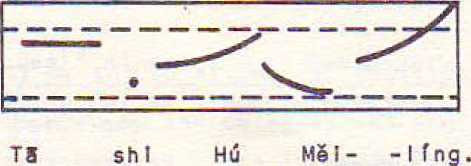
In addition to these automatic effects of stringing words together, deliberate effects of sentence intonation single out for attention particular parts of a sentence or Indicate how a whole sentence is to be understood.
Normally, a surname will carry more information than a following title and, thus, will be given greater emphasis by heavier stress.
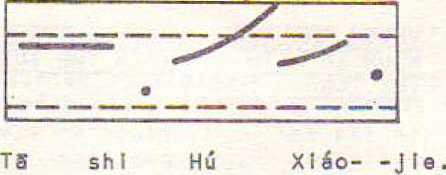
’he subordinate status of the title Is shown by the fact that It is often pronounced with no full tone.
B
J
er
JP
:h
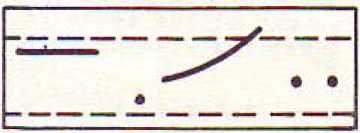
T5 shI Hú Xiáo- -Jle.
More generally, the key word or phrase In any sentence may be emphasized by heavy stress.
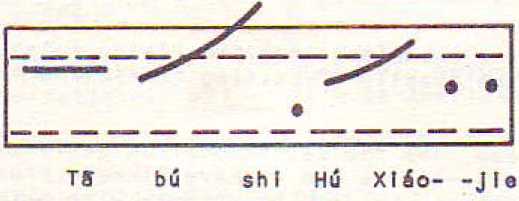
Here, the stress on the negative marker bjj emphaslzes to someone that he is wrong to think that he has Identified Miss Hú.
With the exception of words that are emphasized, words in rapid normal speech may seem to have lost the tones you are working so hard to learn. But don’t feel cheated. In the first place, the words are seldom really monotone; there Is probably something there to hear. (When you are doing the talking, it Is better to risk being overly precise, since only the fluent speaker has the right to mumble.) In the second place, these words are going to be emphasized sometimes, and then you can't fudge.
The use of stress to single out for attention particular parts of sentences Is basically the same In Chinese and English. The only major difference to keep In mind Is that in Chinese stress exaggerates the pitch pattern of a tone. Stress does not give the syllable a falling pitch pattern, as Tn English. Be careful not to turn your stressed Chinese syI IabIes~Into Fallingtone syllables.
There is considerably more difference between Chinese and English In the use of Intonation patterns to indicate how whole sentences are to be understood. In English, intonation patterns are most noticeable at the ends of sentences. The typical pattern Is a drop at the end of the sentence, used for most statements and for most questions with question words like "who" or ” w h a t. ”
I'm Denial KI ng.
Who are you? %
The most common exception to this typical pattern In English is a rise at the end of the sentence, used for most questions that can be answered "yes’* or "no.”
Are you Mr. KlngT^Z
You're Mr. King? f
Who am. I?/ (meaning "You're asking
who I am?")
in the lest two examples, only the rising intonation shows thet these are "echo questions11 calling for yes/no answers.
In Chinese, the typical Intonation pattern—the pattern for most statements--1s the one we have already presented; the sequence of tones, modified by stress, with a faster tempo and a narrower, lower pitch range than for words in Isolation.
You will have to fight your natural tendency as a speaker of English to end statements with a drop In pitch. A High tone remains a High tone; a Rising tone remains a Rising tone; and a Low tone, with Its rising tall, remains a Low tone, even at the end of a statement. Do not change them Into Falling tones.
The most common exception to this typical Chinese Intonation pattern Is a slightly raised sequence of tones, used for most questions. Unlike the English rising Intonation, the Chinese raised Intonation produces hIgher-than-normeI pitch throughout the sentence and is used for questions with question words, as well as for yes/no questions.
In the following two sentences, only the difference between raised Intonation and normal Intonation signals that the first Is a yes/no question and the second a statement.
and who I ō t terns
pat-ta+e~
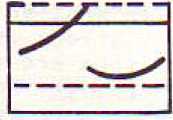

NT hSo? (You’re fine?}
W& h S o -(Pm fine.)
EngiIsh :rs
Now Jet’s compare the Intonation of a question-word question with Its answer:
asking that
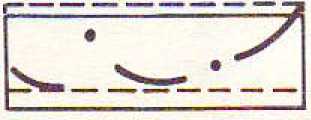
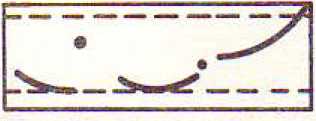
NT shī nělguo rén?
(What’s your nationality?)
Wò shl Máíguo rén. (ITm an Amar!can.)
■n for
।
and
ikar tone
ind a the
Another Chinese intonation pattern lowers the pitch throughout the sentence# often giving the voice s breathy quality rather like a sigh. This pattern Is used for '’echo questions#1’ which are used to verify what has been said. Let’s compare a normal question (raised Intonation) and an ’'echo question’1 (lowered IntonatIon):
ma-or
:tǐon

ftwasn rst
NT xīng Wáng ma?
(Is your surname Wang?)
NT xl ng Wing a?
([You say) your surname Is
King?)
In discussing these three Chinese Intonation patterns, the point has repeatedly been made that they affect the general pitch level of the whole sentence. However, there are noticeable intonations! features at the ends of sentences. These are particularly noticeable when the last syllable Is In the Neutral tone. In fact, the marker a has no real meaning or grammatical function of Its own, merely serving as a carrier of various final pitch contours which affect meaning. There are also cases where a final syllable with full tone Is extended to carry one of these final pitch contours,
Together with Interjections and the various pause markers which punctuate sentences, these Intonatlonal devices provide much of ths expressiveness of Chinese speech. Keep listening for them.
APPENDIX I: LIST OF INITIALS
the p í tch i n-tl -tone . ct I on ch
sse
'S
3
J
PTnyTn
|
Roma n1z a 11o n |
Nearest English Equivalent |
|
b |
"b_i |l,lf but unvoiced |
|
c |
"bets," but more aspirated |
|
ch |
Mchaw," but more aspirated and In ZrZ position |
|
d |
"dj i 1 , " but unvo 1 ced |
|
f |
"fl 1 1 " |
|
g |
T,£l II," but unvo 1 ced |
|
h |
"M II," but harsher |
|
J |
"J_eep," but unvoiced and in /I / position |
|
k |
"Mil," but more aspirated |
|
1 |
"LI 1” |
|
m |
"ml 1 1" |
|
n |
"nJ 1" |
|
P |
"2J 11," but more aspirated |
|
q |
"cheap," but more aspirated and In ZIZ position |
|
r |
"raw," but with tongue curled back more |
|
s , |
"Bess," but stronger |
|
sh |
"Shaw," but In ZrZ position |
|
t |
"till," but more aspirated |
|
w |
(See Appendix 11, List of Finals.) |
|
X |
between the ZshZ of "sheep" and the ZsZ of "seep," but in ZIZ posT+lon |
|
y |
(See Appendix II, List of Finals.) |
|
z |
"beds," but unvoiced |
|
zh |
"j_aw," but unvoiced and In ZrZ position |
APPENDIX 11: LIST OF FINALS
|
PTnyTn Roman 1zat1 on |
Nearest English Equivalent |
Spelling w 1 thout 1 n : t_i_a i |
|
a |
"Ma" | |
|
a 1 |
"Shangha1," "h 1 gh" | |
|
an |
"Qatar 1 o" | |
|
ang |
"Ma_" + /ng/ | |
|
ao |
"Mao Tse-tung," "mouth" | |
|
ar |
"Narc1 ssus" | |
|
6 |
’’Adeline" | |
|
el |
"lei," "s 1 e 1 gh" | |
|
en |
"fun," "ch 1 ckan" | |
|
eng |
"lung" | |
|
er |
"ermlne" | |
|
1 (after £, £, c) |
"JJ_st" (/s/ position) | |
|
(after r, zh, ch, sh) |
"washer" (/r/ position) |
r 1 |
|
(elsewhere) |
"Bl kin P' |
yì |
|
la |
"Yamaha," "yahoo," "yacht" |
ya |
|
1 an |
"yen" |
yen |
|
I ang |
/y/ + "Mia" + /ng/, "Yonkers" |
yang |
|
1 ao |
"yow 1'" |
y ao |
|
1 e |
"ye 11ow” |
ye |
|
1 n |
"mean" |
y 1 n |
|
1 ng |
"anH_no" + /ng/ |
y Ing |
*
|
PTnyTn Roman Izat i on |
Nearest English Equivalent |
Spe Hing w 1 thout Initial |
|
I ong |
/y/ + "woman" + /ng/ |
yong |
|
lu |
"yeoman" |
you |
|
010 |
"wa 1 1" | |
|
ong |
"woman" + /ng/ | |
|
ou |
"soul" | |
|
411 |
"Budapest" |
wu |
|
ua |
"quaj fty" |
wa |
|
ua 1 |
"Waikiki"why" |
wa 1 |
|
uan11 |
"quant 11y," "J uan" |
wan |
|
uang |
"Wong"quality" + /ng/ |
wang |
|
u 1 |
"we 1 g_h" |
wel |
|
un11 |
"Owen," "won" |
wen |
|
uo |
"wall’1 |
wo |
|
d11 |
íno English equivalent; pronounced with the tongue in the /I/ position and the lips In the /u/ position, simultaneous 1 y. ) |
yti |
|
Uan11 |
/U/ + "Ontario" |
yUan |
|
Ue11 |
/ ùl / + "h^n" |
y Ue |
|
Un11 |
/U/ + /n/ |
y[fn |
NUMBERS (NUM)
The ability to use the Chinese number system may be one of ths most useful skills you will acquire during this course. The Numbers resource module Introduces the Chinese numbers from zero through 99,999 and ordinal numbers.
The essential part of this module consists of the Numbers (NUM) tapes and the accompanying displays and exercises In the workbook section of this module. The workbook text Is followed by a summary section.
You should work through at least the first four tapes, which Introduce the numbers up to 100, while you are studying the Orientation Module. These tapes Include some work on pronunciation. Working with numbers offers an excellent opportunity to build up fluency and accuracy of pronunciation without having to learn a lot of new vocabulary.
NUM tapes 5 and 6 are Intended to be used with the second half of the Money Module, where higher numbers are used in banking situations. However, because tapes for the resource modules are as self-contained as possible, you may use them at any time with a minimum of reference to other components of the course.
TAPE 1 WORKBOOK (NUMBERS 1-6)
2 èr 5
3 s3n 6
ExercI so I
4 3 12 3 2 14
Exercise 2
A. 1243 B. 3421 C. 1324 0. 4132 E. 2431
Exercise 3
12 5 6 3 5 4 6
Exercise 4
C. 1645 D. 2564
E. 6135
A. 5315 B. 5362
TAPE 2 WORKBOOK (NUMBERS 7-10 and 0)
2 èr
3 s3n
4 si
5 wū
Exercise I
A.____ 8.
5 7 6 8
0. ___ E-
4 7 3 8
Exercise
ft. S765 B. 7843
6 I líi
7 qT
8 bS
9 J I Ǔ
IO shí
0 I í ng
C. ___
8 7 13 2 7
6 6 7 5
C. 7157 D. 2867 É.
5868
|
Exercise 3 A. 7 6 5 6 D. 8 6 4 2 |
B. |
C. |
--B — | ||||||||
|
E. |
1 3 5 |
7 7 | |||||||||
|
4 |
3 |
8 |
7 | ||||||||
|
7 |
8 8 | ||||||||||
|
Exercise 4 A.____ 9 0 0 9 D. 5 9 0 6 Exercise 5 |
B. E. |
7 4 |
% 9 S 0 3 |
0 9 |
C. |
9 |
0 |
8 |
7 | ||
|
A. 8790 Exercise 6 A.____ 17 7 6 D.____ 16 2 0 |
B. |
1939 0. E. |
C. 1 1 |
4096 4 9 2 9 2 9 |
0. |
2005 C. |
1 |
E 0 |
6 |
7980 6 | |
TAPE 3 WORKBOOK (NUMBERS 11-99)
DISPLAY I
|
11 |
shíyT |
20 |
èrsh f |
22 |
èrshIèr |
|
I2 |
sh f èr |
30 |
sBnsh f |
33 |
sBnsh1sSn |
|
I 3 |
sh í sBn |
40 |
si sh ( |
44 |
sish1 si |
|
I 4 |
sh í si |
50 |
wǔsh f |
55 |
wúsh1wǔ |
|
I5 |
sh í wǚ |
60 |
Hùshf |
66 |
11ush 1 II ù |
|
I6 |
sh f Ií ù |
70 |
qTshí |
77 |
qTsh1qT |
|
I 7 |
sh f qT |
80 |
bSshf |
88 |
bSshlbā |
|
I 8 |
shfbS |
90 |
J I ūsh í |
99 |
J I ūsh 1J 1ǚ |
|
19 |
sh f j I ǔ |
Exercise I
|
1. |
2. |
3. |
4. |
5 , _ |
|
12 |
40 |
30 16 |
20 | |
|
6, |
7. |
8. |
9. |
10. _____ |
|
1 1 |
70 |
17 90 |
!4 |
|
ExercIse 2 | ||||||||
|
1 . 85 |
2. |
17 |
3. |
44 |
4 , |
93 |
5. |
38 |
|
6. 29 |
7. |
70 |
8. |
26 |
9. |
52 |
10. |
61 |
TAPE 4 WORKBOOK (NUMBERS 1-99, REVIEW)
|
Exercise I |
|
1 . 3 2.16' 3, |
|
6. 91 7. 34 8. |
|
ExercIse 2 |
|
1. 67 2. 12 3. |
|
6. 35 7. 26 8. |
|
Exercise 3 |
|
1 . 4+5 2. 3 + 8 |
|
5.7+2 6.9+7 |
|
9. 3 + 9 10. 4 + 4 |
|
Exercise 4 |
|
1. 36 2, 41 3. |
|
6, 94 7. 25 8. |
|
Exercise 5 |
|
1. 21+10 2. 65+10 |
|
5. 59 + 10 6. 74 + 10 |
|
9. 25 + 10 10. 76 + 10 |
|
48 |
4. 70 |
5. |
22 | |
|
59 |
9. 6 |
10. |
30 | |
|
90 |
4. 54 |
5. |
83 | |
|
79 |
9. 48 |
10. |
4 | |
|
3. 1+2 |
4. |
6 + 9 | ||
|
7. 0 + I |
8* |
5 + 6 | ||
|
72 |
4. 18 |
5. |
63 | |
|
66 |
9. 52 |
10. |
27 | |
|
3. |
33 + 10 |
4, |
18 |
+ 10 |
|
7 . |
42 + 10 |
8. |
86 |
+ 10 |
|
NUM MODULE | |||
|
TAPE 5 WORKBOOK (NUMBERS DISPLAY i |
100-999) | ||
|
100 |
y 1 bá 1 |
600 |
I I ùbā I |
|
200 |
i1ǎngběI (11ángbā 1)12 |
700 |
qTbì i |
|
300 |
sSnbǎ1 |
800 |
bībāT |
|
400 500 |
si bS 1 wí bā I (wúbā1) DISPLAY II |
900 |
j I ǔbSI (j lúbǎI) |
|
140 |
y1bí1 sish í |
655 |
I IùbǎI wish!wǔ |
|
222 |
11SngbíIèrsh1èr (11ángbS i èrsh1èr) |
747 |
qTbèlslshlqT |
|
56 1 |
wūbǎ í11ùsh f yT (wúbS11īùshfyT) |
999 |
J I ǔ b í1J 1 ǔ 5 h 1J 1 ū (J lúbSījlūshījlǚ) |
|
Exe rc i se |
1 (Answers are on |
tape.) |
|
1 . |
6. | |
|
2. |
7. | |
|
3. |
• |
8. |
|
4. |
9. | |
|
5. |
10. | |
|
Exerc í se |
2 | |
|
1 . 630 |
2. 543 |
3. 224 4. 468 5. 770 |
|
6, 185 |
7. 852 |
8. 292 9. 369 10. 987 |
|
DISPLAY til | ||
|
COLUMN 1 |
COLUMN 2 | |
|
104 |
y 1 bǎ11 í ngsl |
140 ylbilsìshf |
|
202 |
1 i ǎngbǎ11 f ngèr |
220 11Sngbá1 èrshí |
|
( 1 i ángbǎ11 í ngèr) |
(11ángbè1èrsh f) | |
|
405 |
s 1 bS í1 í ngwǔ |
450 slbílwǔshf |
|
603 |
1 Iùbǎ11 í ngsSn |
630 1 1 íibè ī sSnsh í |
|
709 |
qTbā i 1fngJ i □ |
790 qTbǎ1 J i ǔshí |
DISPLAY IV
|
1 10 |
y ì b a 1 y Tsti í |
4 14 |
s 1 b ǎ i y T s h 1 s ì |
|
21 1 |
1 1 āngbě1yTshlyT ( 1 iángbályTshlyT) |
7 16 |
qTbǎ1yTsh 111 ù |
|
3 12 |
sSnbǎ1yTsh1èr |
916 |
J JubalyTshl (j [úbā 1 yTshl bif) |
Exercise 3
|
I . |
101 |
2. |
1 10 |
3. |
1 1 1 |
4 , |
270 |
|
5. |
308 |
6. |
410 |
7 . |
555 |
8. |
90! |
|
9. |
613 |
10. |
220 |
1 1 . |
812 |
12. |
721 |
Exercise 4
|
1 - |
909 |
919 |
99 1 |
6. |
4 14 |
441 |
444 |
|
2. |
74 1 |
747 |
774 |
7. |
200 |
208 |
280 |
|
3. |
203 |
2 13 |
230 |
8. |
5 1 5 |
525 |
55 1 |
|
4. |
3.1 í |
313 |
33! |
9. |
808 |
868 |
881 |
|
5. |
602 |
612 |
62 1 |
10. |
101 |
1 10 |
1 i 1 |
|
Answers to |
Exerc1se |
4; 1.919 |
2. 741 |
3. 230 |
4. 31 1 | ||
|
5 . |
602 |
6 . 444 |
7. 208 |
8. |
525 |
9. 808 |
10. 110 |
TAPE 6 WORKBOOK {NUMBERS 1,000-99,999)
DISPLAY I
|
1 ,000 |
yì q ǐ In |
6,000 |
1 i ìiq 1 In |
|
2,000 |
1 iǎngq1In |
7,000 |
qTq iIn |
|
3,000 |
sSnq í In |
6,000 |
bīq íIn |
|
4,000 |
si q i In |
9,000 |
j1ǔq1 In |
|
5,000 |
wǔqIIn |
1,246 yìqI InfīangbSI sishI I Iù
3,575 slnq1InwǔbSiqTshiwǔ
6,750 í iùqiInqTbǎiwǔshf
Exercise I
|
1 . |
5,555 |
2. |
3,690 |
5. |
1 ,200 |
4 , |
6,455 |
|
5. |
2, B99 |
6. |
7,131 |
7 . |
4,256 |
8. |
9,742 |
|
9. |
8,329 |
10. |
2,974 |
Exercise 2
|
1. |
1,111 |
2 . |
7, t 1 7 |
|
5. |
4,9 12 |
6. |
9,115 |
3. 2,210
7. 3,813
4 , 6,616
8, 5,419
COLUMN I
COLUMN 2
|
1,001 |
y ì qISn1 f ngyT |
1,101 |
yl q 1 3nyl bS 1 I í riavT |
|
2,002 |
1 Iǎngq15n1f ngèr |
2,202 |
1 lǎngqlínliāngbSi1í ngèr |
|
6,005 |
1 I ùq i ān I tn gwǔ |
6,605 |
I iìiqISínl iùbāi 1 fngwǔ |
|
7,007 |
q T q13 n1 1ngqT |
7,707 |
qTqīSnqTbǎl 1f ngqT |
|
9,009 |
J!ǔ q1Sn1 tnqJi ù |
9,909 |
J 1 ǔq iīnj1ǔbā1If ngJ 1ǔ |
Exercise 3
1 . ________________________________________
2. ________________
3. _______________
4. _______________
5. _______________
6. _________________
7, _________________
8. _______________
9. _______________
10. _______________
(Answers are on page 68.)
Exercise 4
|
1. |
8, t' 4 ? |
2. |
1,202 |
3. |
4,007 |
4. |
6,500 |
|
5. |
7 , 2 1 2 |
6. |
3,4 10 |
7. |
9,704 |
6. |
2,002 |
|
9. |
5,330 |
10. |
2,222 |
Exercise 5
I . ____________________________________________
2. ________________
3. _______________
4. _______________
5. ________________
|
1! 0,000 il |
y í wàn |
6í 0,000 |
91ùwàn |
|
2, 0,000 |
1 1 ǎngwàn |
1\ 0,000 |
q fwàn |
|
1 3l 0,000 1 |
sSnwàn |
8’0,000 I |
báwàn |
|
4* 0,000 |
si wàn |
9,0,000 |
j I □ w à n |
|
5‘ 0,000 |
wǔwà n |
6. _______________
7. _______________
8. _______________
9. ________________
IO. ________________
(Answers are on page 68.)
Exerc i se 6
|
1. |
62,! 39 |
2. |
45,365 |
3, |
21,540 |
4. |
69,211 |
|
5, |
93,537 |
6. |
14,610 |
7. |
57,442 |
8. |
38,793 |
|
9. |
76,818 |
!O. |
28,954 |
DISPLAY V
|
COLUMN 1 |
COLUMN 2 | |
|
1 ,000 I |
y íwan lingyT |
I ,OOP! yfwànífngyT |
|
1,00 t1 |
y f w□nIf ngyT s h I y T |
1 , 100 1 yíwànyìqiSnl īrìgyT |
|
i ,01 H |
y í wà nI íngyìbǎi- |
],1101 yT wà n y1q1Sny1bǐ t- |
|
yTshiyT |
1 f n g y T | |
|
Exerc i se |
_7 | |
|
1 . |
6. | |
|
2; |
7, | |
|
3. |
8. | |
|
4 . |
9, | |
|
5, |
10. | |
|
. (Answers are on page 68.) | ||
Exerc1se 8
|
1. |
80,015 |
2. |
46,002 |
3. |
70,005 |
4 . |
22,20! |
|
5. |
54,003 |
6. |
30,009 |
7 . |
27,006 |
8. |
10,055 |
|
9. |
62,008 |
10. |
90,509 |
|
DISPLAY VI | |
|
No. |
42 DàlT J 13 Sìshlèrhào |
|
No. |
36 DàlT Jlē SSnshlllùhào |
Exercise 9
|
1 . |
No. |
42 DàlT |
Street |
|
2, |
No. |
36 DàlT |
Street |
|
3. |
No. |
29 DalT |
Street |
|
4. |
No. |
63 DàlT |
Street |
|
5. |
No. |
84 DàlT |
Street |
ANSWERS TO TAPE
6 EXERCISES
|
ExercIse |
3 | ||
|
1 , |
1,001 |
6. |
4,00B |
|
2. |
1,101 |
7, |
9,616 |
|
3. |
6,505 |
8. |
3,403 |
|
4* |
7,001 |
9, |
5,501 |
|
5. |
B,0IO |
i 0. |
6,006 |
|
Exsrc150 |
5 | ||
|
t . |
1 i , 1 ! 1 |
6. |
05,215 |
|
2. |
52,520 |
7, |
23,310 |
|
j. |
78,234 |
a. |
67,490 |
|
4. |
92,46? |
9. |
34,043 |
|
5. |
45,730 |
10. |
29,672 |
Exercise 7
|
1 , |
20,001 |
6. |
Ē4,206 ' |
|
2. |
40,010 |
7. |
60,009 |
|
3. |
33,001 |
8. |
59,003 |
|
4. |
70,601 |
9. |
10,050 |
|
5, |
98,015 |
10. |
20,505 |
SUMMARY
The Chinese system of numbers is simple and predictable. You may find it more regular than the number system Tn English.
|
Here are |
the numbers |
1 to 10 plus |
zero: | |
|
yr |
( 1 ) |
wǔ (5) |
J’ǔ |
(9) |
|
èr |
(2) |
1 I Ù (61 |
sh t |
( 10) |
|
s5n |
(3) |
qT (7) |
I I ng |
< 0) |
|
si |
(4) |
b5 (8) | ||
|
The 10, shí, |
numbers 11 followed by |
through 19 are the words for |
formed with the 1 through 9: |
word for |
|
sh f yT |
(II) |
sh f si |
f 14) |
sh : qT |
(17) |
|
Shíèr |
( 12) |
sh í wǔ |
(15) |
sh í b£T |
(18) |
|
sh1sSn |
(13) |
sh í 1 1ù |
(16) |
Sh í j i ū |
(19) |
|
You can see addition: 10 |
that + 1 > |
the system for etc. |
forming |
11 through i 9 |
resemb1es |
|
The number 20 is |
1 i tera11y |
"two tens." All the |
multiples | |
|
of 10 are formed with |
the words |
for 2 through 9 followed by | ||
|
the word for |
10, sh í: | |||
|
èrsh f |
(20) |
wǔsh í |
(50) bSshf |
(80) |
|
sīnsh í |
(30) |
1 i ùsh í |
(60) Jiǔshf |
(90) |
|
sìsh f |
(40) |
qTsh í |
(70) | |
|
You can see |
that this |
system resembles multiplication |
: 2 x 10, | |
etc.
The remaining numbers up to 100 are
formed by combining
these two systems. For example, to form the word for 21,
|
fIrst multiply, |
"two tens,” and then |
add |
the word for 1. | ||
|
èrshIyT |
(2 1 ) |
si shIj i ǔ |
(49) |
I 1 ùsh1qT |
(67) |
|
èrsh1b5 |
(28) |
si sh1yT |
(41 ) |
qTsh1 si |
(74) |
|
sīn s hIèr |
(32) |
wǔsh i s5n |
(53) |
bSsh1 1 1 ù |
(86) |
|
sānsh1 1 I ù |
(36) |
wǔshIb5 |
(59) |
J I ǔsh1èr |
(92) |
|
si sh1wǔ |
(45 ) |
1 1ù s hIwǔ |
(65) |
J I ǔ s h i j I ǔ |
(99) |
|
Notice that shi, |
10, |
loses its tone |
in the examples above |
1 | |
Multiples of 100 are formed in the same way as multiples
|
of 10: the words for |
1 through 9 followed by the word for | ||||
|
"hundred," - b ǎ i y ì bǎ I |
(100) |
si bǎ I |
(400) |
qtbǎ I |
(700) |
|
1 1 ǎngbǎ i |
(200) |
wǔbǎ i |
(500) |
bābǎl |
(800) |
|
(11ángbǎ 1 ) sffnbǎ1 |
(300) |
(wúbǎ i ) 1 1ù bǎ 1 |
(600) |
J 1ǔbǎI (Jlubǎi) |
(900) |
Notice that the word for I, y T, occurs before -bǎ I, although It was not used before 10, shT. Note also the dTf'f ere nt word for 2 used when forming the hundreds. In the numbers 2t 12, and all numbers containing 2 up to 100, èr Is used. Llang— Is used with hundreds.
When forming numbers with "hundred," remember that some of the numbers from I through 9 change tone before the Low tone of -bǎ i . Y£ (I) changes from a High tone to a Falling tone. LISng (2), wǔ (5), and J Iu (9) change from Low tones to Rising tones.
yt yl bǎ I
I ling- I iSngbǎl (llángbSl)
wǔ wǔbǎI (wǔbǎ i)
Jlǔ Jlǔbǎi (Jlúbǎí)
The numbers I through 9 after the hundreds bring up a special point when there Is no number in the tens place: a zero, Iíng, Is used to mark that place.
ylbǎillngyT (101) I IùbǎI Ifng I Iù
I ISngbSIttngèr (202) qTbǎiIfngqT
slnbilllngstn <303) J IùbǎI I IngjIí (909)
slbSi I fngsl (404 ) (J Iúba I I I ngj I ǔ )
wǔbSI I Ingwǔ (505)
(wúbǎ iIIngwǔ )
When numbers Tn the teens follow the hundreds, yT (I) is Inserted before the word for 10, shI. To understand why this Is necessary, you need to distinguish between the numbers 1 through 9 and the numbers which label a group of numbers--more specifically, which label a power of 10, such as "ten," sh I, "hundred," -bǎ I , and so on. The rule is that two numbers which are labels for other numbers (such as -bǎ I and sh I) cannot occur one after the other-. Therefore, yT Is added before sh f In the numbers I 10 through !!9,
|
yì bǎ i yTsh í |
f 1 10 ) |
wūbǎ i yTsh1wǔ |
(5 15) |
|
1 1 angbS1 yTsh1yT |
(211) |
b3bS1yTsh i1 ī ù |
(816) |
|
s 1 b ǎ I y T s h f è r |
(412) |
sffnbǎ iyTsh IqT |
(317) |
|
j 1 ǔbǎ i yTsh i s5n |
(913) |
1 1 ùbā i yTsh i b3 |
(6 18) |
|
qTbā i yTsh i si |
(7 14) |
ylbǎIyTsh1j1ǔ |
(119) |
The High tone of yT changes to a Falling tone before the Low tone of - bǎ i but does not change before s h í, as you would expect. The tone of yT is usually affected by any tone which follows, but this case is an exception.
The remaining numbers In reguI a rIy.
$3nbǎ i si shI I 1li ( 346)
the hundreds are formed
IīùbSI sishIqT (647) qTbǎlsānshlI IÙ (736) bSbStqTshlJiǔ (979) J ī GbS TI lùshièr (962)
The word for "thousand” Is -qISn. The thousands are
|
formed In the |
same way as |
the |
hundreds. | ||
|
y1q T 5n |
(1,000) |
1 1 ùq ī 5n |
(6,000) | ||
|
11ǎngqISn |
(2,000) |
qTq Iffn |
(7,000) | ||
|
sSnq i 5n |
(3,000) |
blq15n |
(8,000) | ||
|
si q i 5n |
(4,000) |
j 1 u q 1 5 n |
(9,000) | ||
|
wǔq13n |
(5,000) | ||||
|
Notice that 2 Is 1 iǎng- and that to a Falling tone before the High |
the High tone of |
tone of yT changes -q15n. | |||
Rules concerning tone changes and use of yT and H ng for numbers In the hundreds also apply to numbers in the thousands.
|
yì q ī S'n 1 f ngbísh ī 1 í ìj 1 iǎngqiSnl íǎngbǎlèrshí wǔqI3n1 i ùbǎ1yTsh1 bāq I Sny 1 bǎ H t ngwìí j1ǔq1Sn1f ngyTsh1qT |
£ 1,086) (2,220) (5,610) £8,105) (9,017) |
The use of Ifng is expanded in numbers as large as thousands. The word Iíng can stand for two or more adjacent zeros. This use Is similar to the English "and" In "one thousand and one" (1,001),
y 1 q I ffn I f ngyT (1,001) I I ù q ī 8 n I f n g I ī ù
(6,006)
(7,007)
(8,00S)
(9,009)
couId lead
IlǎngqiSnl íngèr (2,002) qTqISnI í ngqT
sing T SnIī ngsSn (3,003) b3qIffnIí ngbB
siq i Sn11 ngsl (4,004) jIǔq1?n1I ng J 1ǔ
wùqISnIf ngwù (5,005)
Seemingly, this expansion of the meaning of l_ f ng to confusion, but compare the following:
ylqIffnslbSI if ng I Iù (1,406) y1qISnIfngsìsh I I I ù (1,046) ylqI In If ng I I ù (I,006)
ylqlínlfngllùshf (1,060)
The remaining numbers In the thousands are formed reguI ar Iy.
JlǔqlínllàngbàlqTshlbó qTqlSnsSnbǎlyTshlyT siqISnwǚbàIèrshIèr IlǎngqīSnylbǎíIIùshIsffn
(9,278) (7,311) (4,522) (2,163)
The word for "ten thousand" Is -wan.
yfwàn (10,000) Ilùwàn (60,000)
llàngwàn (20,000) qfwàn (70,000)
sSnwàn (30,000) báwàn (80,000)
stwàn (40,000) jlùwàn (90,000)
wǔwàn (50,000)
Notice that the numbers yT, qT, and bff change from High tones to Rising tones before the Failing tone of -wàn.
The rules for hundreds and thousands also apply to ten thousands: I) The word I I S ng- (2) Is used with -wàn, 2) Numbers which label a position cannot occur one right after another. 3) The word ling can stand for two or more adjacent zeros in a number.
JiùwànèrqlSnsānbSlslshi I iù I I Sngwànèrq1ffnèrbāIèrsh I èr
(92,346 )
(22,222)
b á w à nIí ngb5 (80,008)
bá wà nI í ngbffshIbS (80,088 3
báwàn I í ngbgbǎ I bīsh I bā (80,888) [n the first two examples èr Is used for 2 when it Is not the first digit In a number.- The second example clearly shows that native speakers may start off with I ISng- and then switch to èr.
Numbers in the ten thousands bring out a characteristic of the Chinese number system which Is truly different from the English system of numbers. Traditionally, Chinese numbers were written with the comma to the left of the fourth digit.
I iSngwànwǔqiSnwǔbàlsSInshl I 1 ù 2,5536
báwàn I Iùq1SnqtbǎIsìshIqT 8,6747
Like the cardinal numbers, ordinal numbers in Chinese are also easily and regularly formed. The word for '’number," dì-( in the sense of "number I1’} may be placed before any cardinal number to make it an ordinal number.
|
dlyT |
("number 1"flrst") |
|
dl èr dl sffn dl si dì wǔ dì 1 lù d ì è r s h í The prefix dl - must |
("number 2," "second") ("number 3," "third") ("number 4," "fourth") ("number 5," "fifth") ("number 6," "sixth") ("twent1ath") be followed by a unit number, not by |
|
a number which 1$ a label |
for a group of numbers. For Instance: |
|
dl ylb§ I (NOT dìbS 1 ) dì yl q I ffn (NOT dlqlín) dly fwan (NOT diwan) Notice that this does NOT |
("LoneJ hundredth") ("Cone3 thousandth") ("Conel ten thousandth") hold true for the numbers 10 tc 19: |
|
d 1 sh 1 dlsh 1 yT dlsh 1J 1 ǔ |
("number 10," "tenth") ("number 11," "eleventh") ("number 19," "nineteenth") |
There is also another word, - hào, which when used with a number refers to things in an order. Unlike the numbers used with dl -, the numbers with -hāo come to be used as names for the ttīTngs they refer to, as Tn addresses or dates.
Dèíl JIS Slshièrhào ("No. 42 Dà 11 Street")
SUnyuè SānshlyThào ("March 31st11)
There are two ways to say numbers aloud, One way Is to give the full form of the number, Including the labels for the powers of 10.
80,011 báwàniíngyTshIyT
12,705 y(wànI IāngqISnqTbSI 1fngwǔ
70,009 qíwàniíngjlu
48,347 siwànbSqISnsSnbāI sish1qT
The other way Is to use "telephone style," leaving out the labels for the powers of 10.
80,011 b3-Hng-I fng-yT-yT
12,705 yT-èr-qT-Ifng-wu
70,009 qT—Ifng-I íng-lÍng-Jiu
48,347 s1-bS-sSn-sl-qT
There are two things to notice when reeding numbers "telephone style," First of all, since there Is a slight pause between each number, the tone of a syllable Is not changed by the next syllable. Therefore, ail numbers are pronounced with their basic tones. Secondly, Ifng cannot stand for more than one zero (and Is repeated If need be),
"Telephone style" Is often used to Identify a year. The word for "year," -n I án, follows the numbers.
yT-JIǔ-wú-Iíng-nI an (1950)
CLASSROOM EXPRESSIONS (CE)
|
CE |
1 | |
|
I. |
Zao! |
Good morning. |
|
2. |
Women shàng kè ba. |
let’s begin class. |
|
3. |
N1 tTng wo shuō. |
Listen to me say It. |
|
4 . |
NT dong le ma? |
Do you understand now? |
|
5. |
Wǒ bù dong. |
1 don't understand. |
|
6. |
Dǒng le. |
1 understand. |
|
7. |
QÌng gSnzhe wo shuO. |
Please repeat after me |
|
8. |
QT ng nI zà I shuǒ y f cl. |
Please say 11 aga i n. |
|
9. |
Duì Ie. |
That's correct. |
|
10. |
Bù duì . |
That's not right. |
|
I 1 . |
Wǒ bíi zhTdào. |
1 don't know. |
|
12. |
Shi shénme ylsl? |
What does It mean? |
|
13. |
Hǎo, wǒmen xià ke ba. |
Okay, class Is over. |
CE 2
I. Wǒ mél tTngqTngchu.
2. Wǒ you yIge wèntf,
3. NT shuǒcuò le.
4. Hide fāyTn bú +àI hSo.
5. NT gēn tff shuǒ.
6. Wáng Dànlán, nT wèn went!.
7. Hu M ě I 1 T n g , n 1 h u í d á .
I didn’t hear clearly.
I have a question.
You said It wrong.
Your pronunciation isn’t too good.
You talk with him OR You tell It to him.
Wáng Dànián, you ask the questions.
Hú Mailing, you answer them.
0, Q'íng riT fīnchéng Zhōngwén.
9, Qìng n't fSnchéng YTngwén.
10, Qlng dà yìdǐǎnr shSngyTn
shuē.
II. Qlng man yldlanr shuC.
12, ZhSng LāoshT, nín hàol
13, MíngtI5n jlàn.
14, Car Zhíīngwén zěnme shu5?
Pieass translate it Into Ch Inese.
Please translate it Into Engl Is h.
Please talk a little louder.
Please talk a little slower,
Mr. (Teacher} ZhSng, how are you?
See you tomorrow.
How do you say "car" In Ch Inese?
TIME and DATES (T&D)
This resource module summarizes and supplements core module presentations involving dates and time. Time and Dates (T&D) tapes I and 2 cover dates (year, month, day of the month, day of the week, and such expressions as "next week1' and "yesterday1'). TiD tapes 3 and 4 cover time (clock time and such expressions as "In the morning1').
The prerequisites for this module are P&R tapes 1-6 and NUM tapes 1-4. Otherwise, the Time and Dates Module Is self-contained. Note, however, that dates are Introduced with tapes 5 and 6 of the Biographic Information Module and that time is Introduced with tapes 5 and 6 of the Money Module.
TAPE 1 WORKBOOK (DATES) 13
of this module restates the rules
|
Exerc i se |
_l_ (Answers are on tape.) | |||||
|
I , |
(1 ) |
August 5th |
(2) |
September 5th |
Í3) |
August 15th |
|
2. |
( I ) |
August 2nd |
(2) |
August 20th |
(3) |
July 1 Oth |
|
3. |
( I ) |
January 20th |
(2) |
July 12th |
(3) |
October 20th |
|
4. |
(I ) |
October 4th |
(2) |
February 8th |
(3) |
November 10th |
|
5. |
( I ) |
February 9th |
(2) |
December 4th |
(3) |
June 14th |
|
6. |
( I ) |
February 7th |
(2) |
December 7th |
(3) |
December 1st |
|
7 . |
(I ) |
April 1st |
(2) |
October 13th |
(3) |
May 7th |
|
8. |
{ I ) |
October 10th |
(2) |
April 11 th |
(3) |
April 1st |
|
9. |
< I ) |
July 17th |
(2) |
March 19th |
(3) |
January 11 th |
|
IO. |
(I ) |
December 25th |
(2) |
July 31st DISPLAY 1 |
(3) |
January 31st |
|
I . |
AprII 20th |
4. |
March 14th |
7. |
September 3rd | |
|
2. |
May |
20th |
5 . |
March 25th |
8. |
July 3rd |
|
3. |
Ma y |
14th |
6. |
September 25th DISPLAY II |
9. |
July 11 th |
|
I . |
February IB |
3 . |
July 20 |
5. |
October 4 | |
|
2. |
November I |
4 , |
May 4 |
6. |
July 1 | |
TfcD MODULE
TAPE 2 WORKBOOK (YEARS AND DAYS OF THE WEEK)
DISPLAY I
|
1. |
February |
22, 1732 |
4 . |
June 15, 1215 |
|
2. |
July 4+h, |
1776 |
5. |
May 8, 1945 |
|
3. |
January 1 |
, 1863 |
6. |
April 7, 1939 |
«»
|
LAST |
THIS |
NEXT |
|
1925 |
1 926 |
1 927 |
|
I960 |
1961 |
1962 |
|
Rea 1 T 1 me |
? |
Exercise I
_______________S u n d a y
__________Monday
______________T u e s d a y
__________W ednesday
______________T h u r s d a y
_______________f r I d a y
____________S a T u r d a y
tsd module
,k
Exercise 2
|
1. |
Monday |
Tuesday |
Wednesday |
|
2. |
Thursday |
Friday |
Saturday |
|
3. |
Friday |
Saturday |
Sunday |
|
4 , |
Thursday |
Fr1 day |
Saturday |
|
5. |
Wednesday |
Thursday |
Fri day |
|
6. |
Thu rsday |
Friday |
Saturday |
|
7. |
Monday |
Tuesday |
Wednesday |
|
8. |
Wednesday |
Thursday |
Friday |
March
|
Sunday 3 |
Monday 4 |
Tuesday 5 |
Wednesday 6 |
Thursday |
Fr1 day 8 |
Saturday 9 |
August
|
Sunday 12 |
Monday 1 3 |
Tuesday 14 |
Wednesday 15 |
Thursday 16 |
Friday 1 7 |
Satu rday 1 8 |
|
December | ||||||
|
Sunday |
Monday |
Tuesday |
Wednesday |
Thursday |
FrI day |
Saturday |
|
20 |
21 |
22 |
23 |
24 |
25 |
26 |
|
TAPE 1. 5:00 3. 2. 7:00 4. 1 '■ /^T /io 9 n A ) v X 3. fl \8 1 Vu 1 5* at 710 y" 9 \ \8 |
3 WORKBOOK (CLOCK TIME) DISPLAY 1 2:00 5. 12:00 7. 11:00 10:00 6. 3:00 8, 8:00 DISPLAY II s. 2 • / 12 X i\ /\x । iX A /io / A al 19 o 31 V \ V X X. .6 jx iX /II । iX ì\ /ia 2\ a] [9 <L 3 7 \ 7 xL s Jx i'X 61 /\\ \ / 0 1 2\ 7 (9 T j 4/ \8 1 4/ X JX 81 |
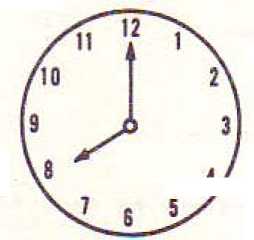

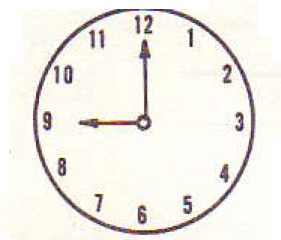
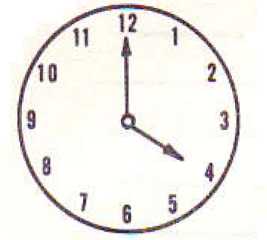

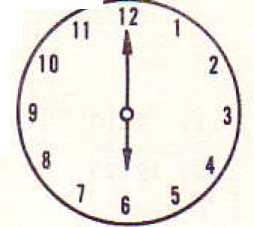
|
Exerc īse 1 |
|
1. 4:00 4:15 4:50 4:45 |
|
2. 6:00 6:15 6:30 6:45 |
|
3. 2:00 2:15 2:30 2:45 |
|
4. 12:00 12:15 12:30 12:45 |
|
5 . i1:00 11:15 11:30 11:45 |
|
(Answers are on page 83.) |
|
Exercise 2 |
|
1. 10: 6. |
|
2. 1: 7. . |
|
co uì |
|
4,9: 9 . |
|
5. 4: 10. |
|
(Answers are on page 83.) |
|
Exercise 3 |
|
1 . 6. |
|
2. 7. |
|
Of a> « |
|
4. 9. |
|
5. 10. |
|
(Answers are on page 83.) |
|
DISPLAY III |
|
1. 4:10 3. 7:35 5. 1:04 |
|
2. 12:25 4. 6:43 6. 9:45 |
4» ANSWERS TO TAPE 3 EXERCISES
ExercIse I
5. 11:45
Exercise 2
I. 10:15
Exercise 3
I. 3:05
TAPE 4 WORKBOOK
(CLOCK TIME AND PARTS OF THE DAY)
Exercise I
Indicator
of past time
|
1. ____________ 4. ____________ 7. __________„ 214 ________________ 5. ________________ 8. ________________ 3. __ 6. ________________ 9. ________________ |
(Answers are on page 88.)
|
DISPLAY 1 | ||||
|
1 . |
6: 15 |
3. 9:20 |
5. |
1:17 |
|
2, |
3í 10 |
4. 11:30 |
6. |
5:05 |
|
DISPLAY II | ||||
|
1 . |
3:45 |
3. 11:40 |
5. |
7:55 |
|
2. |
1 : 50 |
4. 9:46 |
6. |
12:59 |
DISPLAY til <
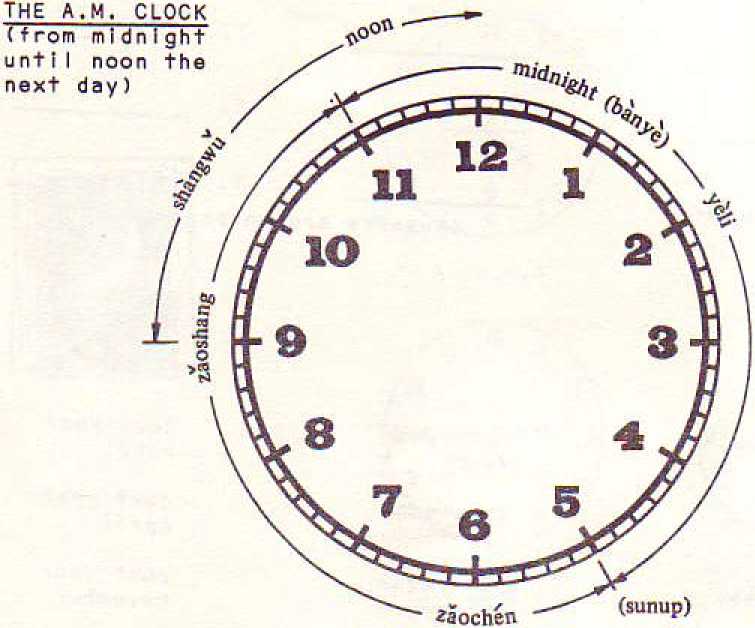
T HE P.M. CLOCK
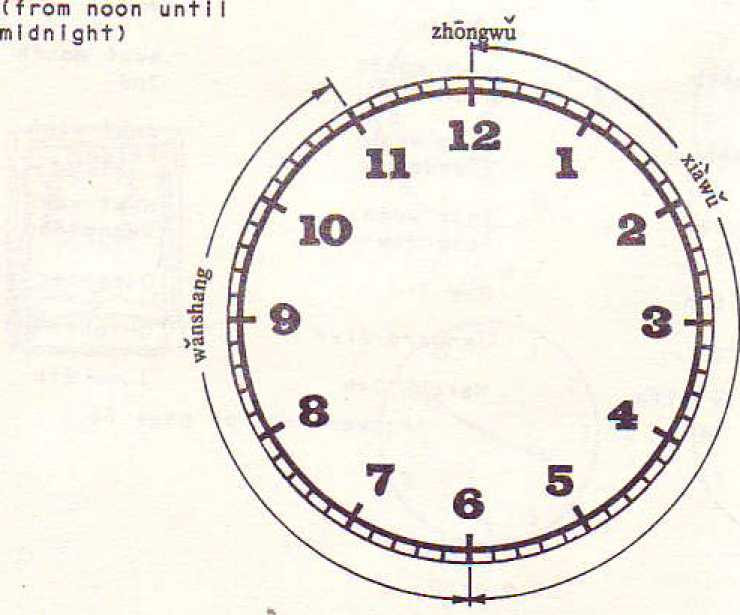
Exerc i se 2

I .
2t
3.
6.
7 . _____________________
6, _______________
(Answers are on page 89.)
Exercise 3
|
I. |
last year February |
last year March |
last year April |
|
2. |
last year J anuary |
this year Aprl I |
next year April |
|
3. |
this year July |
this year January |
next year November |
|
4. |
last month 3rd |
this month 18th |
next month 9th |
|
5. |
last month 20th |
next month 5th |
next month 2nd |
|
6. |
last week Monday |
this week Tuesday |
next week Friday |
|
7. |
this week Thursday |
this week Saturday |
next week Wednesday |
|
8. |
August 6th |
May 3rd |
December 1 I th |
|
9. |
July 2nd |
January 21st |
October 13th |
|
IO. |
February 17th |
March 30th |
June 8th |
|
(Answers are on |
page 88.) |
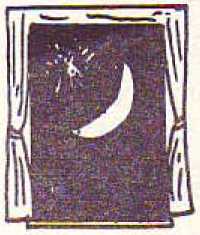
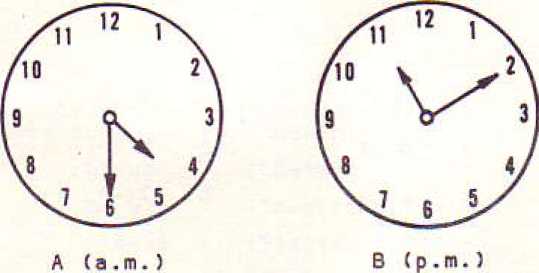

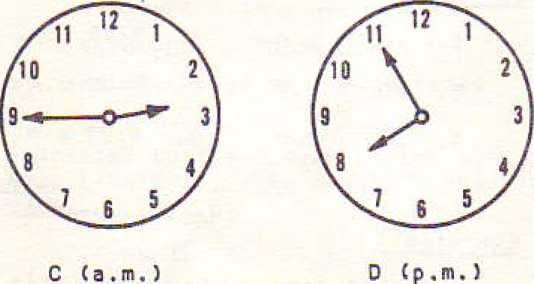
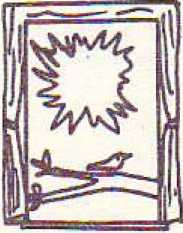
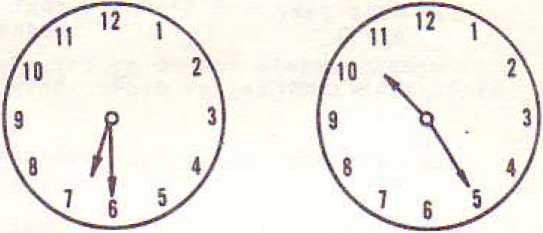
E C p.m.)
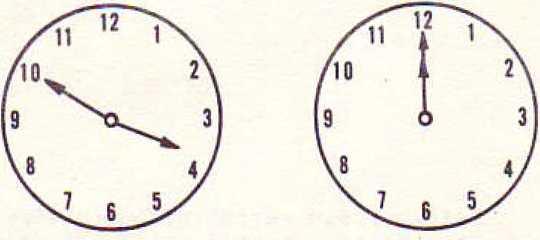
G (p.m. 1
H Cnoonl
ANSWERS TO TAPE 4 EXERCISES
|
Exercise 1 | ||||
|
1 . 1:50 |
4 . |
5:15 |
7. |
4:20 |
|
2. 8:35 |
5. |
8:05 |
8. |
3:30 |
|
3. 6:00 |
6. |
7:45 |
9, |
11:10 |
|
ExercIse |
2 | |||||||
|
1 . |
2:00 |
p. m. |
4. |
9:45 |
p .m. |
7. |
8:50 |
p .r |
|
2. |
10: 15 |
a .m. |
5. |
5:00 |
a.m, |
8. |
11:50 |
p . m |
|
3. |
12:30 |
p.m. |
6. |
6:25 |
a ,m. |
9, |
1 1 :O5 |
a. nt |
|
Exercise 3 | ||||
|
1 . |
last year February |
6. |
this week Tuesday | |
|
2. |
th 1 s Aprl 1 |
year |
7. |
next week Wednesday |
|
3. |
th I s July |
year |
8. |
August 6th |
|
4. |
next 9th |
month |
9. |
January 21st |
|
5. |
1 ast 20th |
month |
10. |
June 8th |
SUMMARY
in Chinese, the name's for the months of the year are the numbers I through 12 fol lowed by the word for "month/1 yuè. *
|
Y I yuè |
("January") |
Qíyuè |
("July" ) |
|
Eryuè |
("Februa ry") |
Báyuè |
("August") |
|
SJnyuè |
("March") |
J I ǚy uè |
("September") |
|
Si yuè |
("Apri1") |
Sh íyuè |
("October") |
|
wǔy uè |
("May") |
Sh fyTyuè |
("November") |
|
L í ùyuè |
("June") |
Sh íèryuè |
("December") |
The tones on the numbers y T, q T, and b_5 change to Rising tones before the Failing tone of yue.
The day of the month Is expressed by the number of the day
|
fo11 owed |
by the |
bound word -hào. |
Literally, -hào means "number | |||
|
slhào |
( |
"the |
4th") | |||
|
q í hào |
( |
"the |
7th") | |||
|
sh íqThào (sh í q í hào) |
( |
"the |
17th") | |||
|
èrsh i bShèo (èrshIbáhāo) |
( |
"the |
2Sth") | |||
|
Notice that the tone when part speaker„ |
numbers yT, qT, and of a larger number. |
bS TKl |
do not always s varies from |
change speaker to | ||
|
The |
order |
of the month and |
the |
day |
of the month |
1 s the |
same in Chinese as It Is In English:
Qíyuè slhào ("July 4")
Báyuè Jlǔhào ("August 9")
Shíèryue èrshièrhào ("December 22”)
*Yuè was introduced in the Biographic Information Module with the spelling yuè. Starting with the Money Module, the umlaut is written only where It Is necessary In PTnyTn: after n_ and 1 to distinguish nu from nŪ and Iu from Iu.
To ask what month or what day of the month it is, use the question word JT — > "how many":
Zhèīge yuè shl Jlyuè? ("What month Is this?")
JTntian j”íhào? ("What Is today's date?")
J1 - ís usually used when the number In the answer Is expected to be no more than 10 or so (duōs.hao being used otherwise). But notice that JT - Is used for the day of the month, when the answer may contaTF a number up to 31.
in Identifying years, four single-digit numbers are followed by the word »nI in, "year":
YTJI ǔèr I 1ùnIán (I 926)
YTJIusSnsánnIán (1933)
YTJ i ǔslern fan (1942)
YTJĪūwǔtfngnián (1950)
These numbers are given in "telephone style" (one by one), not combined into a larger number. YT, qT, and bS do not change tone In "telephone style."
When asking "what year?" the question word nēInIán Is used: NT shl neínián shSngde? ("What year were you born?")
When giving the month, day, and year In Chinese, proceed from the larger to the smaller:
YTqTqTI IùnIán Qíyue sìhào ("July 4, 1776")
YTJIǔwǔI!ngn1án SSnyue sSnshīyThào ("March 31, 1950")
YTJIuIíng Ifngnián Llùyue shíwuhào ("June 15, 1900")
Notice that the word I íng, "zero," is Inserted each.time a zero Is used.
The names for days of the week from Monday through Saturday are formed by using the word for "week," xTng, followed by a number. Notice that the Chinese week begins on Monday.
|
xTngqT |
("week") |
|
XTngqTyT |
("Monday") |
|
XTngqTèr |
("Tuesday") |
|
XTngqTsSn |
("Wednesday") |
|
XTngqTsl |
("Thu rsday") |
|
XTngqTwú |
("Friday") |
|
XìngqTI1ù |
("Saturday") |
There are two different words for "Sunday, neither con taintng a number:
XTngqTtiīn ("Sunday”)
XTngqTH
Literally, XTngqTt]īn Is "heaven day," and XT ngqTrl is "sun day,"
In addition to these commonly used names, which are
standard in the Peopíe’s Republic formed with 11ba 1 :
LlbàlyT LT bà1àr LTbà ǐsīn LT ba ī si LTbàIwǔ LÌbàI I [ù LTbà iti Sn Lībàirl
To ask what day of the week is used:
JTntǐBn xTngqTJŪ JTntǐīn iībàlJJJ
of China, there are names
("Monday") ('’Tuesday") ("Wednesday1’) ("Thursday’') ("Friday") {"Saturday’') {"Sunday")
It is, the question word JT-
("What day is today?") ("Wha+ day Is today?")
TIME WORDS WITH DAY, WEEK, MONTH, AND YEAR
"next year," and
The words for "this year, words for "today,” "tomorrow," one except ion (*):
JTnn1án ("this year") mf ngn i án ("next year")
*qǔ n i s n
("last year") hourián
("year after next") q i án n1á n
("year before last")
and so on and the
so forth are parallel, with
JTntlJn
("today")
mi ngtIīn
{’'tomorrow")
zuót íSn
("yesterday”)
hòutI3n
("day after tomorrow")
q i á nt i ffn
("day before yesterday")
The words for "this month,” ’'next month," and so on and the words for "this week," "next week," and so forth are parallel:
zhèlge yuè
("this month")
xiàge yuè
("next month")
shàngge yuè
("last month")
zhèlge xTngqT OR
zhèlge I ì bà 1 ("this week")
xiàge xTngqT OR xiàge 11 b à i ("next week")
shàngge xTngqT OR shàngge iībàl ("last week")
|
Dlān, literally meaning "dot," Is the counter for hours | |
|
on |
the clock. The word zhōng, "o'clock" (literally "clock"), |
|
í s is |
added optionally. Yldiān (zhōng) (1:00) QTdlàn (zhōng) (7:00) Liàngdlǎn (zhōng) (2:00) BSdiǎn (zhōng) (8:00) SōndlSn (zhōng) (3:00) Jlǔdiàn (zhōng) (9:00) Sldiàn (zhōng) (4:00) Shídiǎn (zhōng) (10:00) WúdlSn (zhōng) (5:00) ShfyTdian (zhōng) (11:00) LlùdlSn (zhōng) (6:00) Shièrdiǎn (zhōng) (12:00) To express time on the half hour, the word ban, "half," used : |
•j
Llàngdlǎn bin (zhōng) (2:30)
Wǔdlín bàn (zhōng) (5:30)
J lūdTSn ban (zhōng) (9:30)
ShíyTdlàn bin (zhōng) (11:30)
Notice that these expressions can also end In zhōng, "o’clock."
To express time on the quarter hour, the word kè, "quarter," I $ used:
Yldlan y f kè (1:15, "a quarter after I")
Llāngdlàn sōnkè (2:45, "three quarters past 2")
WudiSn yíkè (5:15, "a quarter past 5")
Shfèrdlān sōnkè (12:45, "three quarters past 12")
A more specific way to express the idea of "quarter p a st the hour" is with the word guò, "to pass":
sldiān guò yíkè ("a quarter past 4*')
shíèrdtān guò yíkè ("a quarter past 12")
To express the Idea of "quarter to the hour," the word chà, "to lack," may be used:
j I ǔd I ān chà yíkè OR
chà yíkè JlǔdlSn ("a quarter to 9")
shíyTdiān chà yíkè OR
chà yíkè shíyTdiān ("a quarter to II1’)
With expressions of quarter hours before the hour, two word orders are possible. (Only one Is possible with expressions of time after the hour.)
Expressions of quarter hours before the hour or past the hour do not end in zhCng, 11 oT clock."
The word f 5n, "minute," Is used to give the exact time:
I lǎngdlān shíwtifān (2:15)
bīdíān èrshlèrfSn (8:22)
Shídlān shffffn (10:10)
shfèrdlān sínshiqTfān (12:37)
F5n may be omitted ín longer time expressions:
yìdlān sSnshiwǔ (1:35)
yld1àn sSnshIwǔf ēn
The word ling, "zero," may be added to clarify a time exp ressI on :
sSndiān wǔfffn (3:05)
s5nd1 an ling wǔf3n
Guò and chà may be used with time expressions Including minutes:
sffndlān guò èrshlfSn ("20 minutes after 3")
qTdlān chà shtfSn ("10 minutes before 7") chà sh í fffn qTdlān
To ask what time of day It Is, use the question word JT : JTdlǎn zhòng? ("What time Is It?")
|
In Chinese, |
the different parts of a day are referred to | |
|
as follows: |
HOURS (approx.) | |
|
zǎoshan g |
("morn Ing"--fu11 daylight |
6-11 a.m. |
|
(zǎochén) |
unt11 near noon) | |
|
shàngwǚ |
( "f orenoon"--norma 1 working |
8 or 9 a,m. |
|
(shàngwu) |
hours until noon) |
until II a. m. |
|
or 1 p.m. | ||
|
zhōngwù |
("noon") |
II a.m. until |
|
(zhōngwu) |
I p. m. | |
|
xí àwǔ |
("afternoonTI--noon until the |
1-5 p.a. |
|
(x1àwu J |
end of the business day) | |
|
wSnshang |
("evenlng"--after the evening |
6-1 I p.m. |
|
mea 1 ) | ||
|
bànyò |
("midnight") | |
|
yè 1 1 |
("n 1 ght"--genera11y from |
II p.m. until |
|
around II p.m. until sunrise) |
4 a.m. | |
In Chinese, clock time Is often preceded by a word designating the part of the day Involved:
zācshang qTdlín zhffng (”7 o’clock In the morning,*1
7 a.m.)
wǎnshang bSdlín bàn zhōng (”0:30 In the evening,"
8:30 p .m.)
Notice that the Chinese word order once again begins with the larger unit and proceeds to the smaller.
94
There are no appropriate examples In the Orientation Module. You will find these words In later modules.
There are no appropriate examples In the Orientation Module. You will find these words In later modules.
ThIs Is not a name.
Thls Is the name of a former province.
A somewhat similar neutralization happens to vowels In English. Vowels which are perfectly distinguishable when stressed become indistinguishable when unstressed. "I confined the dog" may sound the same as "I can find the dog," although, with stress, "con-" does not sound the same as "can."
ln this summary, underlining calls attention to letters (the letter u) and slant lines call attention to sounds (the sound /□/). “
Standard PTnyTn romanization u_ is written only after n and J_. Everywhere else (after j_, x_, and y_, it is written
simply u.
C, I Finals
You have heard and seen the full vowel /I/ following Initials in the words nl, "you"? mln, "people"; and mfng, "bright." When the vowel does not follow an Initial, it Is written y I .
yT ("one") as Tn "east" or "yeast"
yTn ("cloudy") as In "YIn (Yang")
y Ing ("win") /y/ + /Ing/ as in "sing"
BesIdes the historical reason for this spelling, there Is the reason that adding the suffix Zr/ "brings back" a normal, "broad" /a/ voweI.
Abbreviation of /uo/ after labials rn, b_, and f\
**/U/, /Uan/, /Ue/, and /tin/ are spelled £, uan, ue, and u n respectively after j_, g_, x, and y_.
RomanTzat!on in parentheses indicates tone changes.
The Summary at the- end presented on T&D Tape I .
For further Information on de, as an see notes on Nos. 6-7> Unit 4, BIO.